Francesca and Henk-Jan's Backpacking Trip!
Friday, September 3, 2010
Say Ghat?!
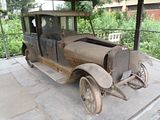
The National Art Gallery was next, which promised us Nepali art inspired by Buddhism. We saw some examples of statues of Hindu goddesses embodying feminine and sexual energy. But the art we’ve seen before so we went on to the National Science Gallery. Let me tell you ‘national’ doesn’t necessarily mean the ‘best’ galleries. In fact, sadly, Nepal has some of the worst displays I’ve seen in any national museum to date! (They need a bit more investment!) Anyways, a rhino skull came next, followed by a display of ‘around-the-world’ dolls, and a bunch of stuffed animal carcasses or animal skulls. The floor finished with an old weapons display. We took a few final pictures of the museums’ buildings before crossing the street to take in another museum, this one about Nepal’s armed forces. The museum had both photos and paintings of Nepal’s armed men (and women) and cases of their former gear/weapons. We later found out that this museum was kind of a waste, since there is an extremely similar (yet better) museum in Pokhara on the Gurkahs which we went to also. Don’t bother visiting this one!
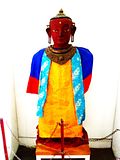
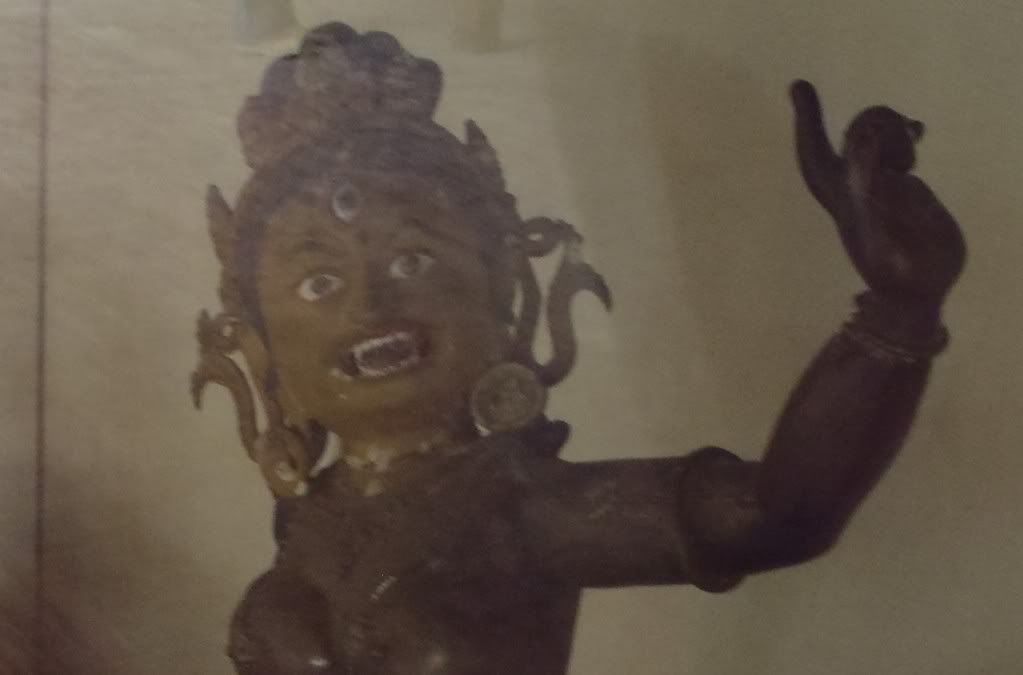
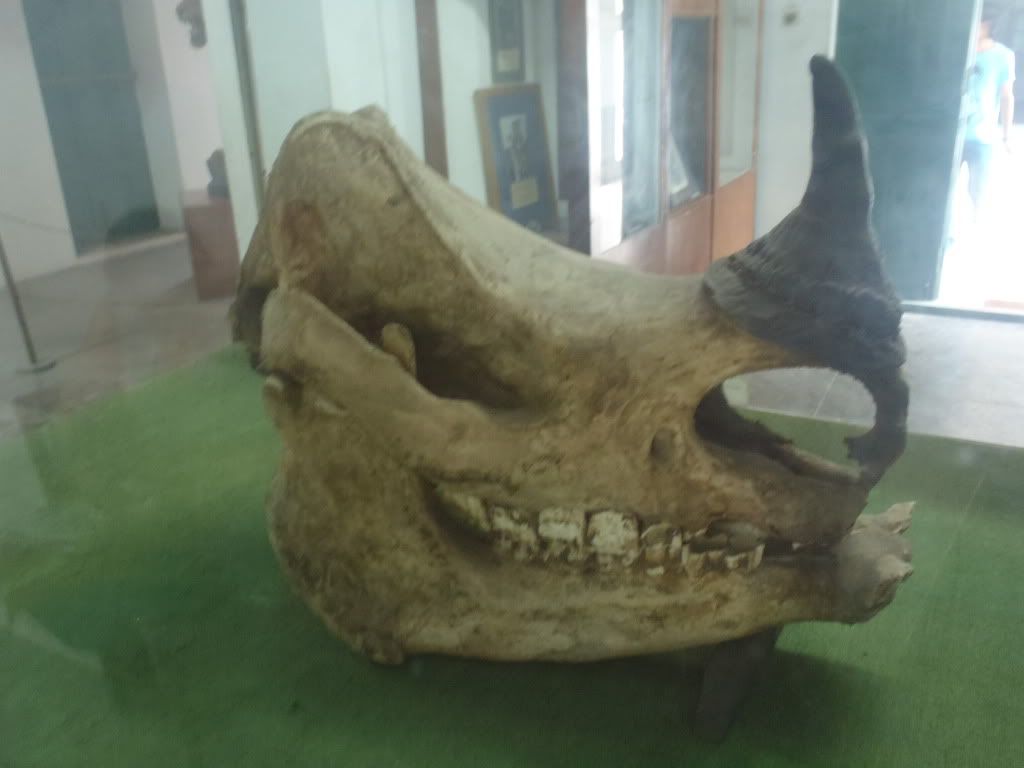
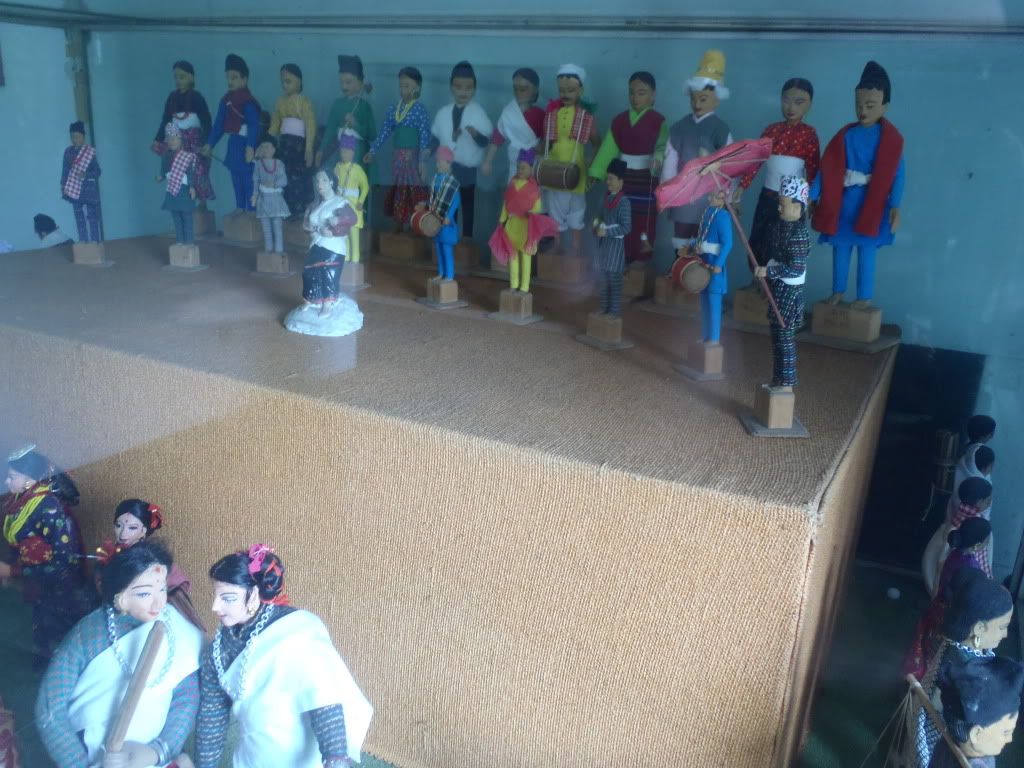
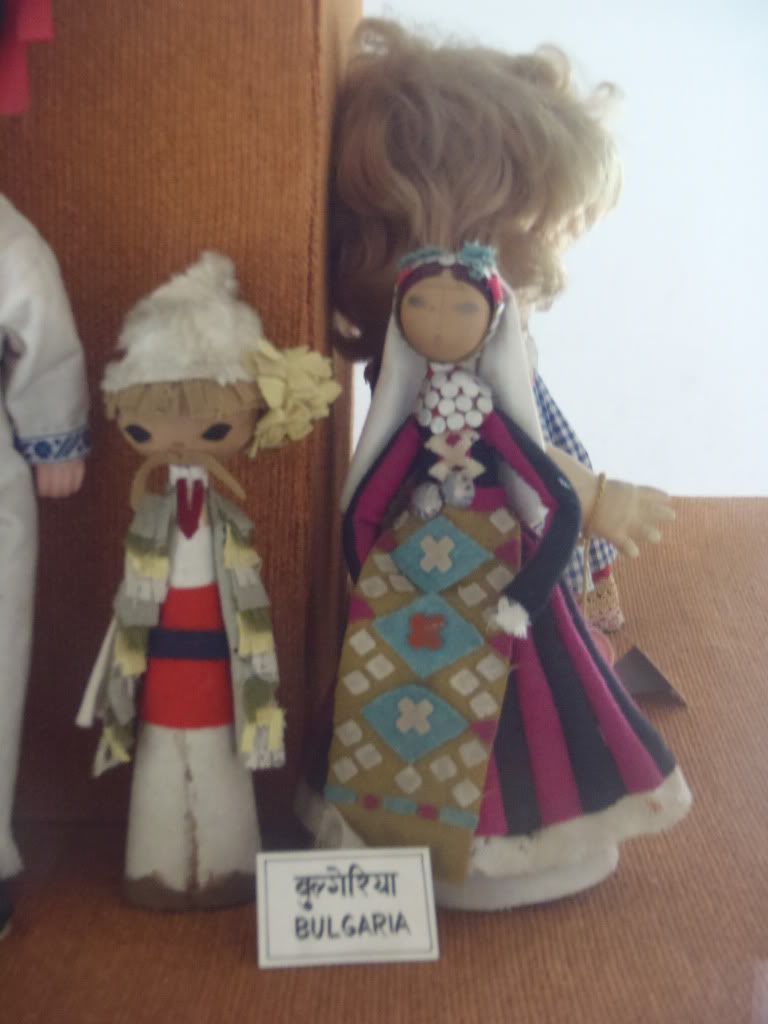
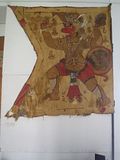
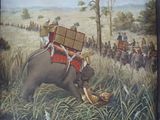
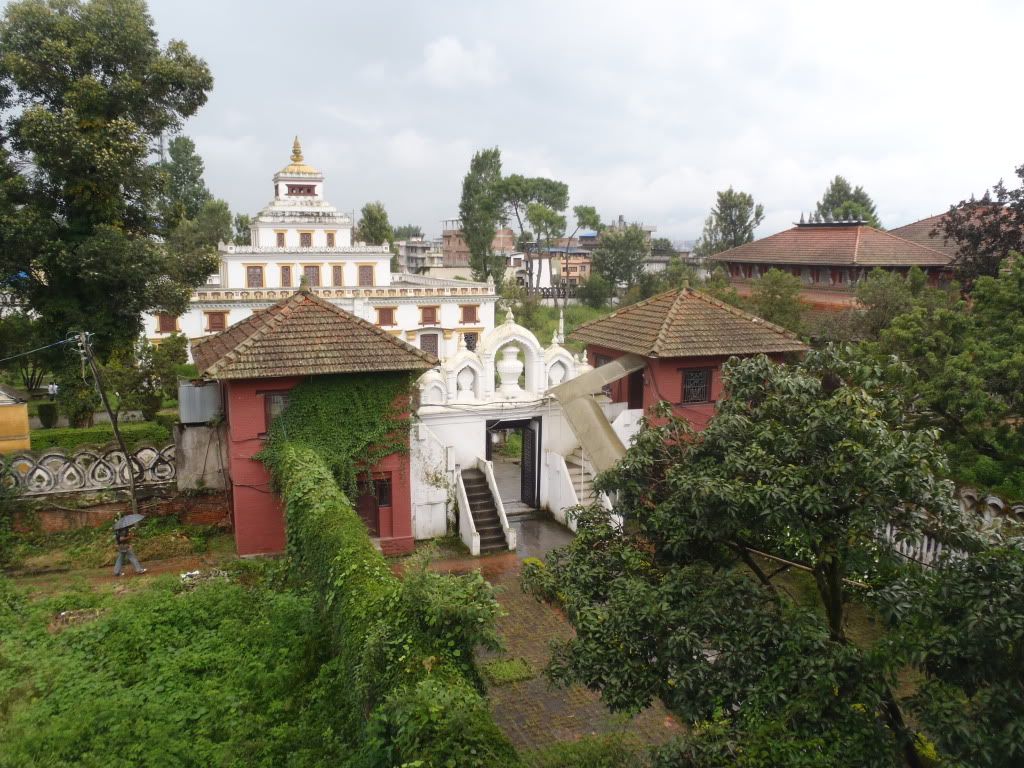
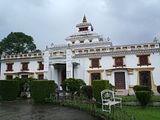
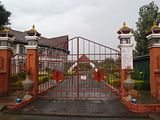
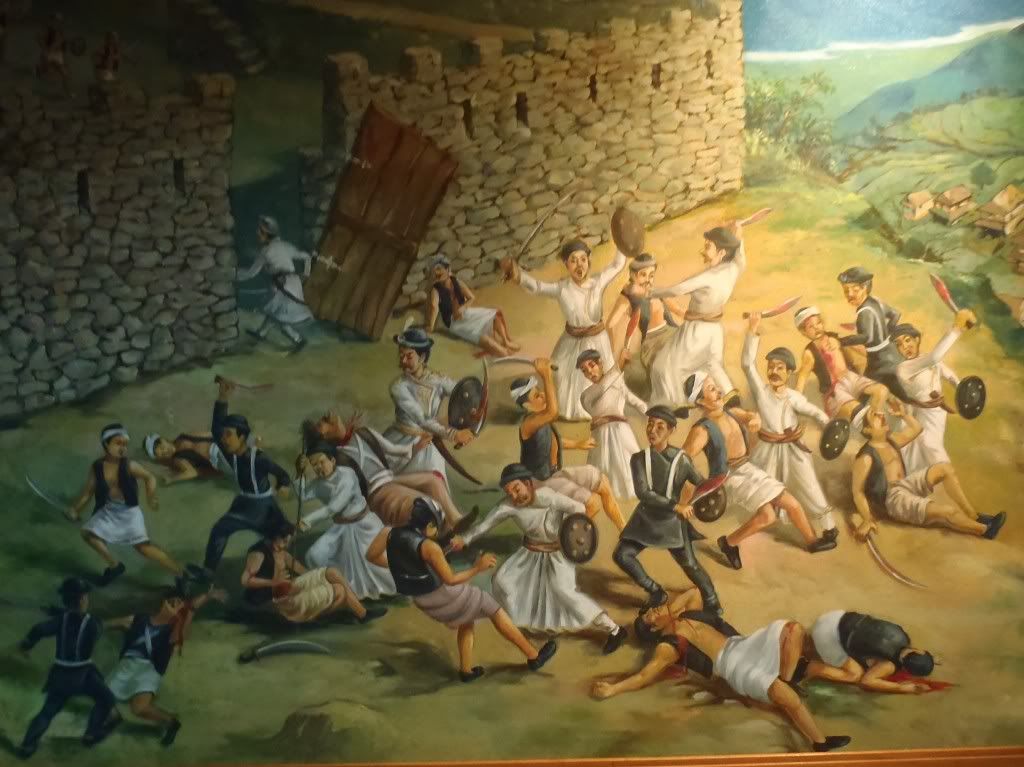
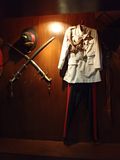
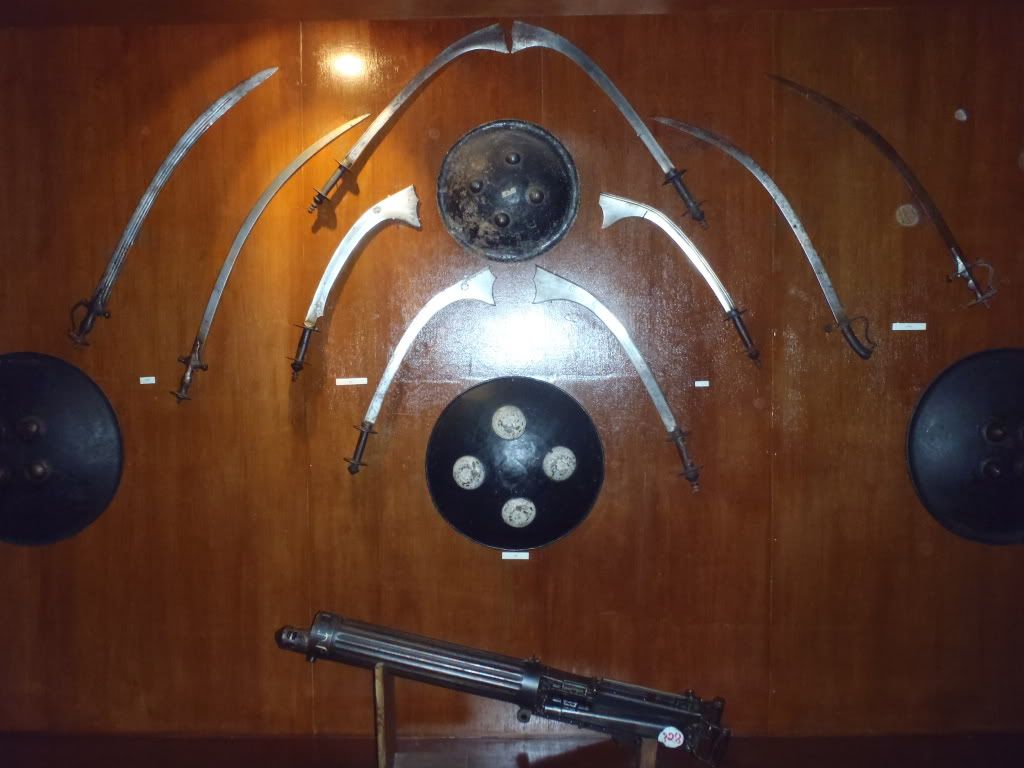
Henk and I had hired a taxi for the day again from the hotel, so we found our driver and had him bring us to yet another small museum, the Natural History Museum. This one looked more like a mad scientist’s laboratory/storage room than it did a museum… but it was one of the most unique little museums we had ever seen! At first we only saw stuffed animals – heads of leopards, skins of tigers and sloth bears, stuffed spotted deer and owls, etc. I was super excited to see a small, stuffed hoopoe bird, one of the colorful national birds of Nepal. But then we saw that there were large, clear bottles stuffed with something… animal fetuses; baby elephants, baby rhinos, baby pigs! We walked through the narrow rows of shelves to find porcupine skin, not ON a porcupine but in a containing jar instead! At first I thought the freakiest of all was hands-down the eight-legged goat embryo. But now that I reflect, it could actually be a toss-up between the goat embryo and the three-month-old human embryo I saw floating in a jar down the hall.
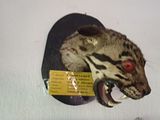
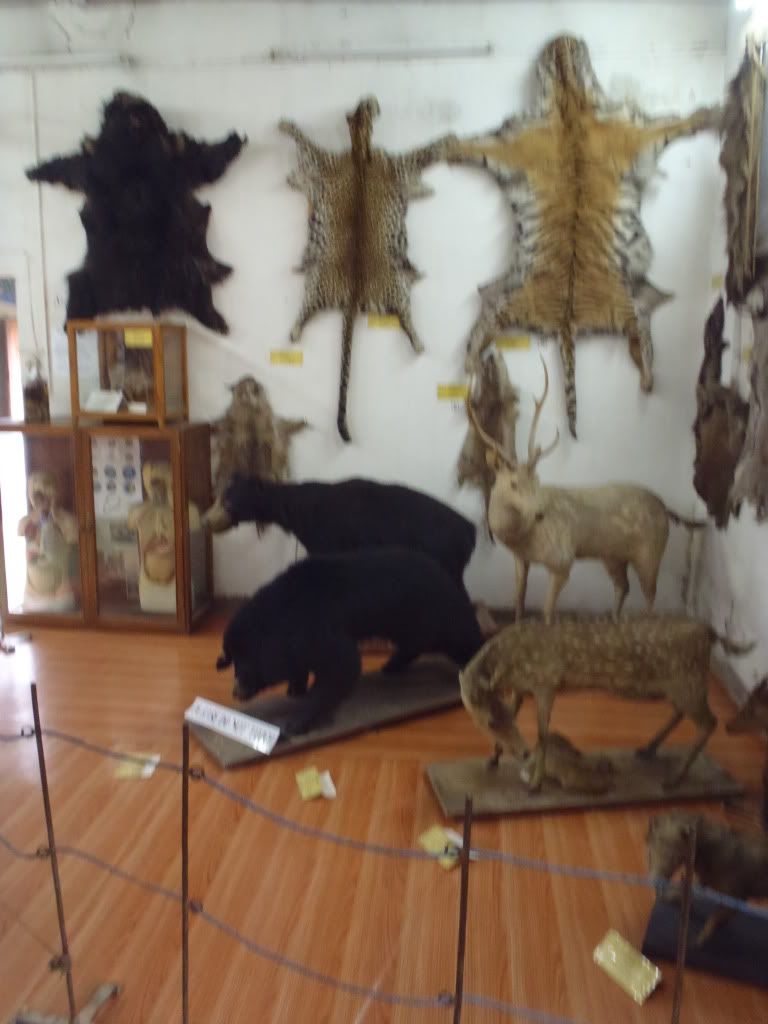
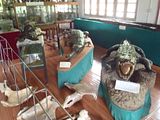
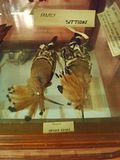
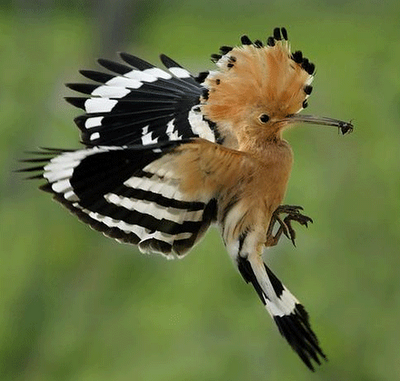
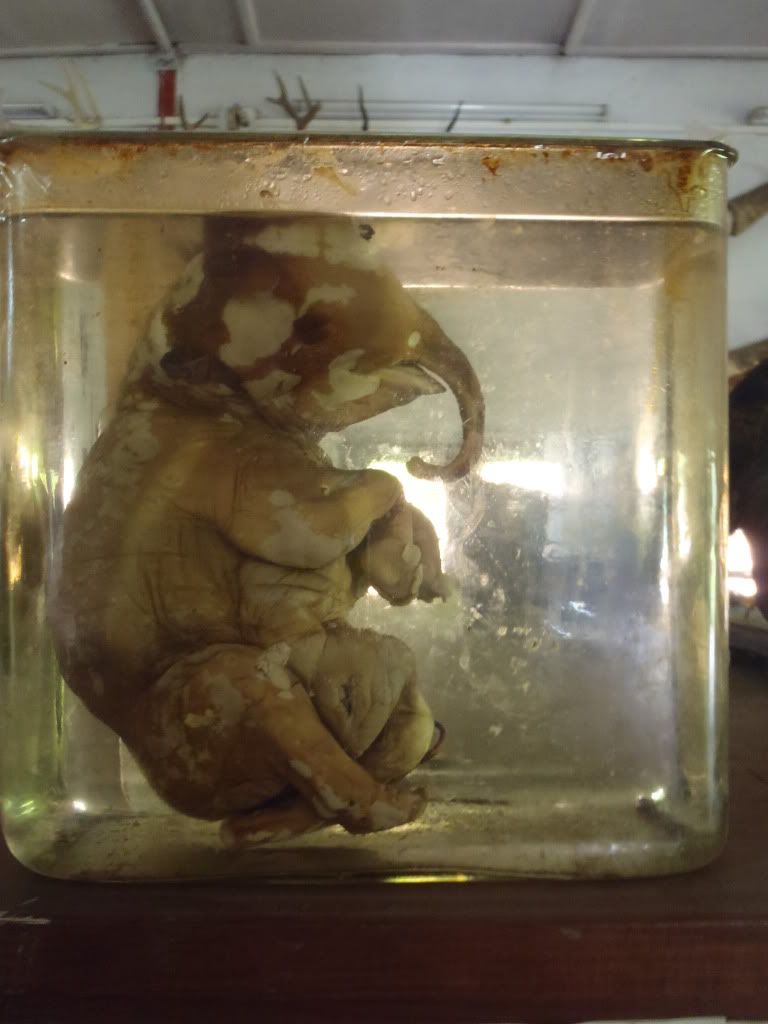
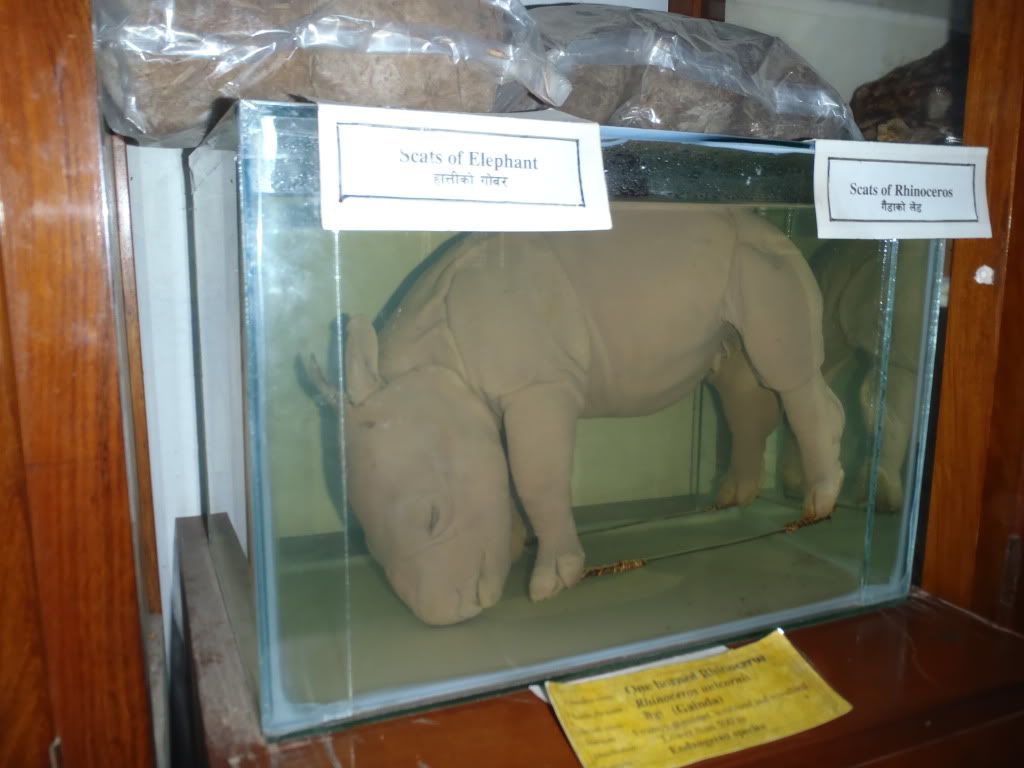
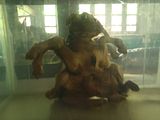
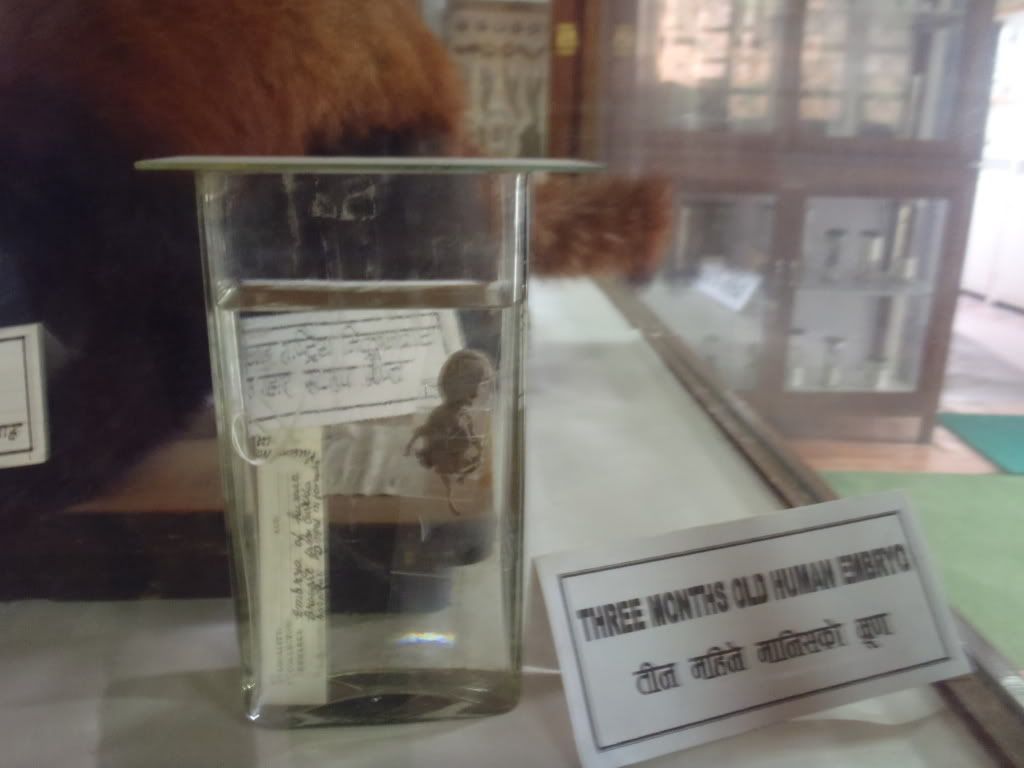
It was getting closer to 3:00 PM and I was starting to feel quite exhausted. While we drove out to Kopan Monastery, I rested on Henk while he took in the scenery. Once we arrived we were a little disappointed to see a beautiful, but pretty typical, monastery. The monks roaming around were clearly schoolchildren – we had come to the equivalent of a ‘catholic high school,’ Buddhism-style. Kopan was impressive but once you’ve been to Tibet, few monasteries outside of Tibet will make your eyes widen in the same way. But we were impressed by the great view from the monastery of the surrounding valley. There were also some interesting quotes by the 14th Dalai Lama around the compound which were fun to walk around and read. I took a peek inside (which I’m not sure was allowed) the main entrance and walked up the stairs to see the students’ dorm area and some 3-D mandalas. Holy objects, such as 3-D mandalas, are sponsored by Buddhists who desire to make merit creating something precious for their community.
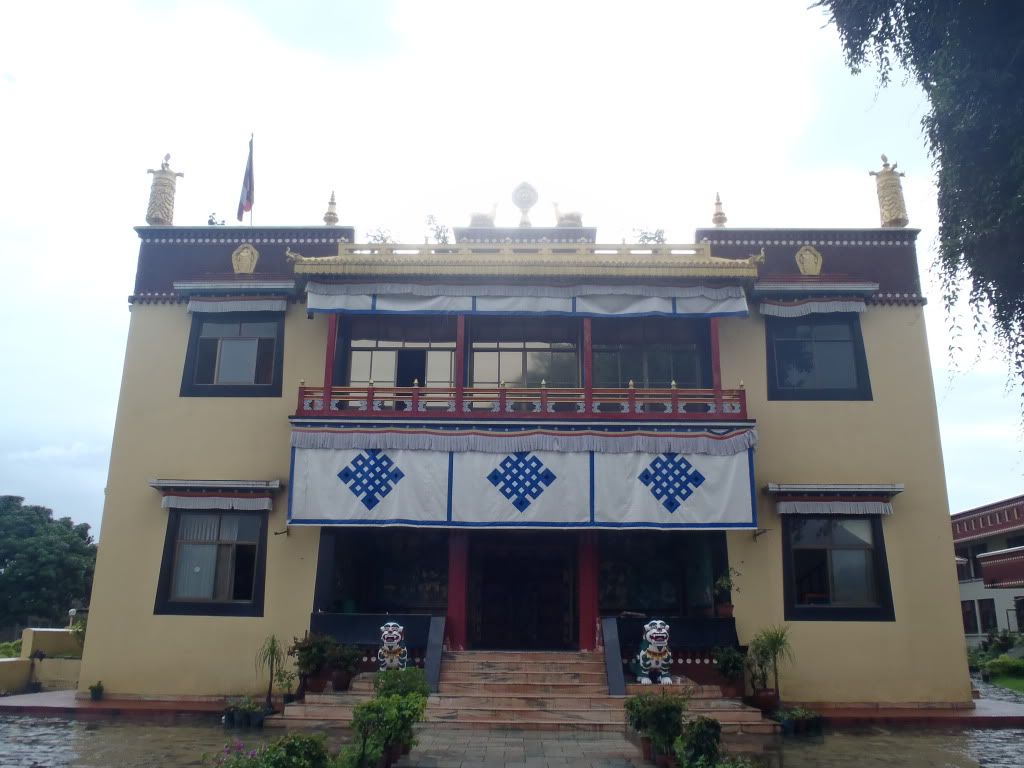
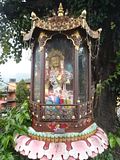
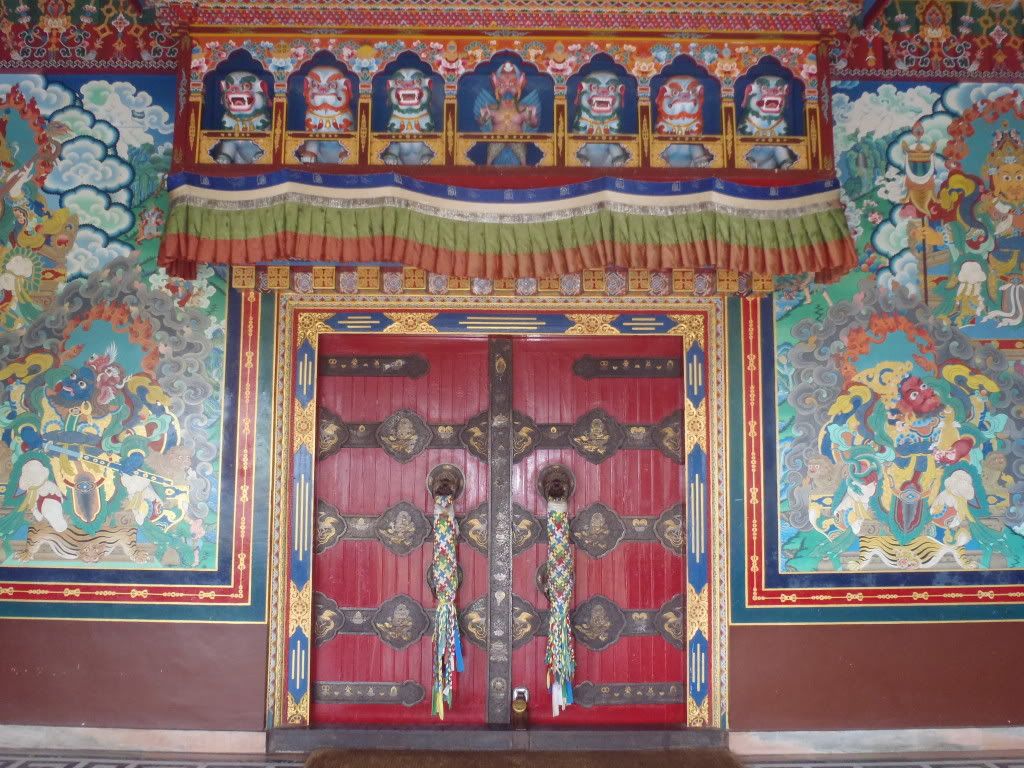
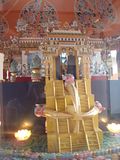

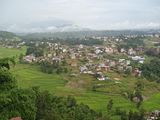
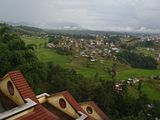
You would think all these places would have taken up our day, but we still had more on our list to see. It was nearly 4:00 PM when we arrived at the UNESCO World Heritage site of Boudhanath Stupa, a massive white stupa with Buddha’s Eyes which immediately awed us. This huge stupa is supposed to be white in color but has turned a greenish-shade from mold growing on its’ base, despite the fact that it is supposed to be whitewashed every year. About the stupa: The story goes that a past Buddha (the Buddha who existed before the famous Buddha) named Kasyapa has his remains buried under Boudhanath. While this is the Tibetan legend, Nepalese history maintains that the stupa was built either during King Manadeva’s region or King Sivadeva’s reign, 500 CE or 600 CE respectively.
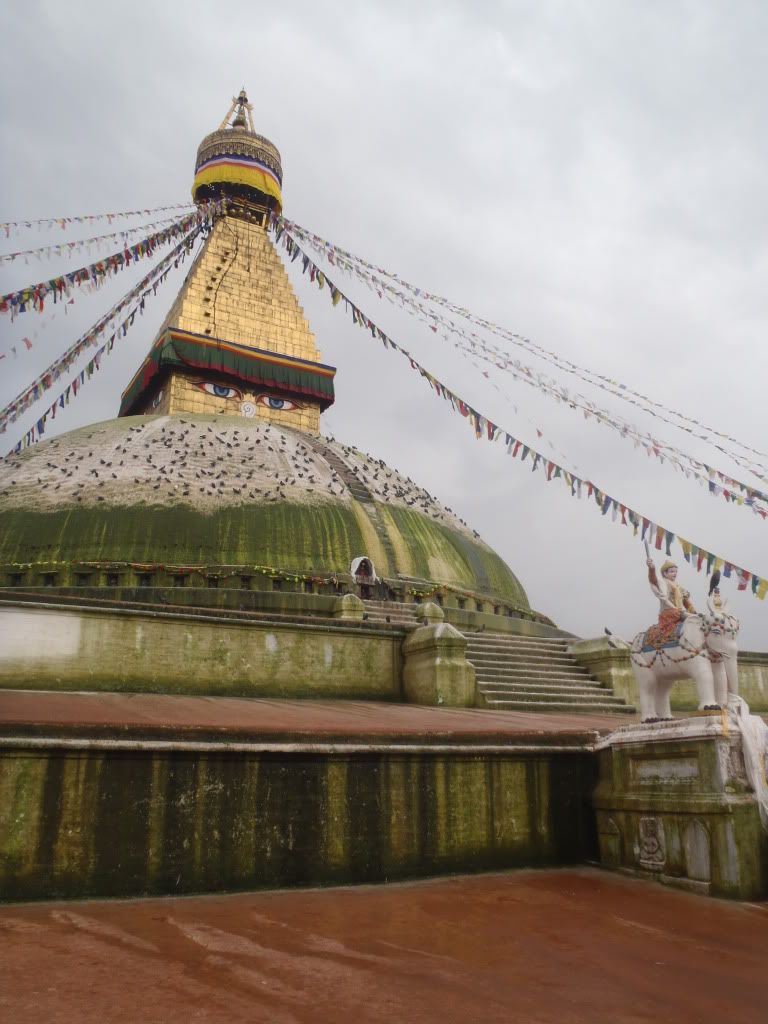
While a stupa may look like it is one giant mound, the symbolism contained in a stupa is greater than it first appears. Starting with the rectangular base, known as the plinth, the earth is represented and the four sides symbolize the four states of mindfulness. Next, above the plinth, is the kumbha or ‘pot’ – a dome symbolizing water. Above the plinth is the harmika, a square tower symbolizing fire. It is on the harmika that the Buddha’s eyes are painted. Finally the spire, and even further up, the umbrella. The spire represents air and the 13 tower levels (according to LP) symbolize the, “13 stages that a human being must pass through in order to achieve nirvana.” Since the umbrella is at the very top, it is symbolic of the, “void beyond space.”
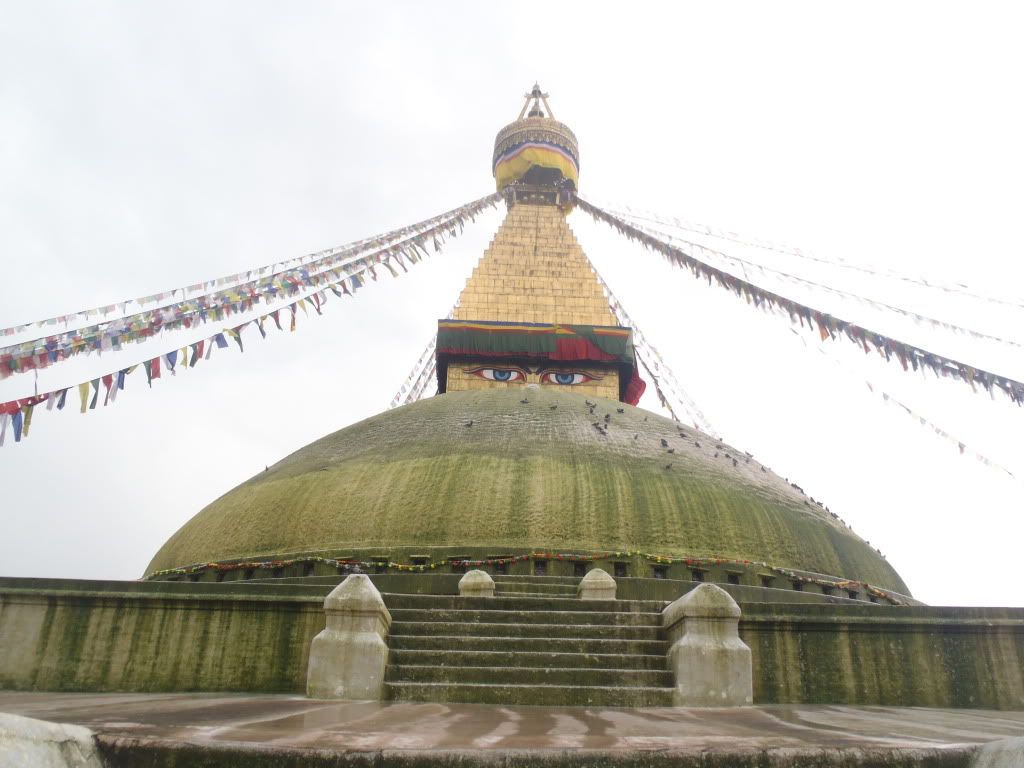
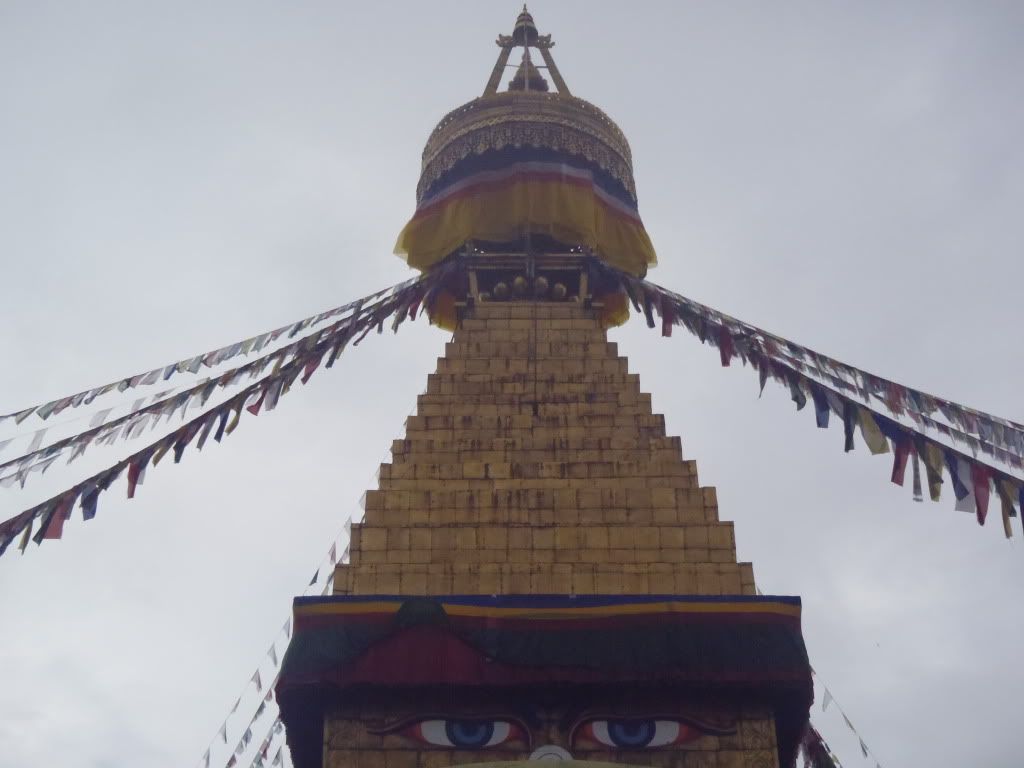
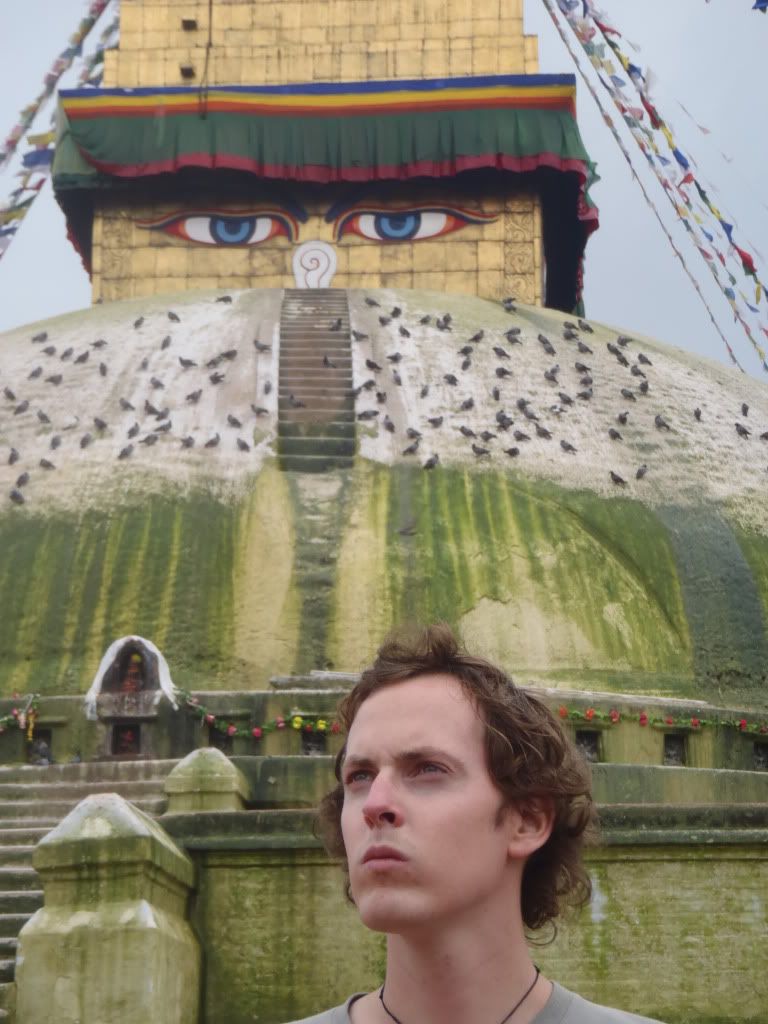
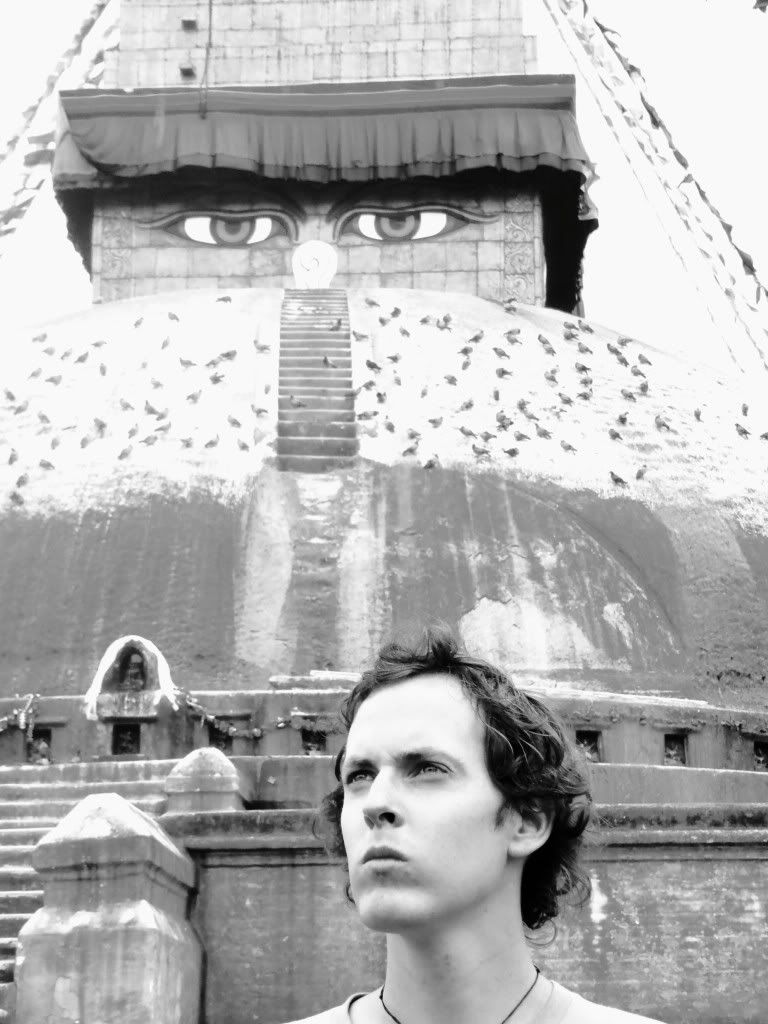

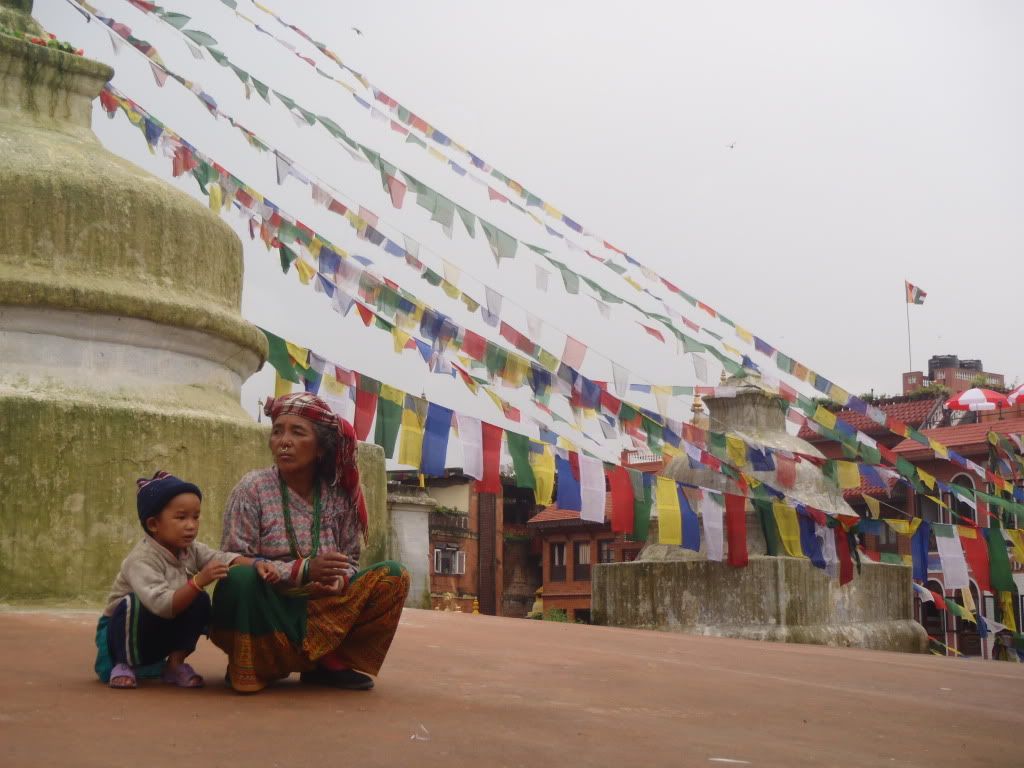
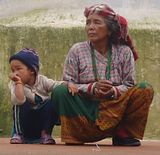
As we walked around the stupa we ducked into some of the side buildings which contained temples or Buddhist clothing/objects of worship shops. Buddha’s watching eyes followed us as we slipped past the burning butter lamps and Tibetan worshippers to get as close as we could to the stupa. Henk and I had a little photoshoot in front of the stupa and considered buying me a skirt (I tried it on, but the fit/material was such poor quality) before we went back to the taxi for our final stop of the day.
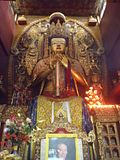
This was at the eerie Pashupatinath Temple, another UNESCO site, this one famed for its cremation ghats. 24 hours a day there are funerals going on at the ghats outside of the temple and it was, quite frankly, a bizarre and mind-numbing experience to visit the ghats and watch the bodies being burned just meters in front of us. But first let me tell you all about the temple itself! First, the story of the temple’s founding thanks to Wiki:
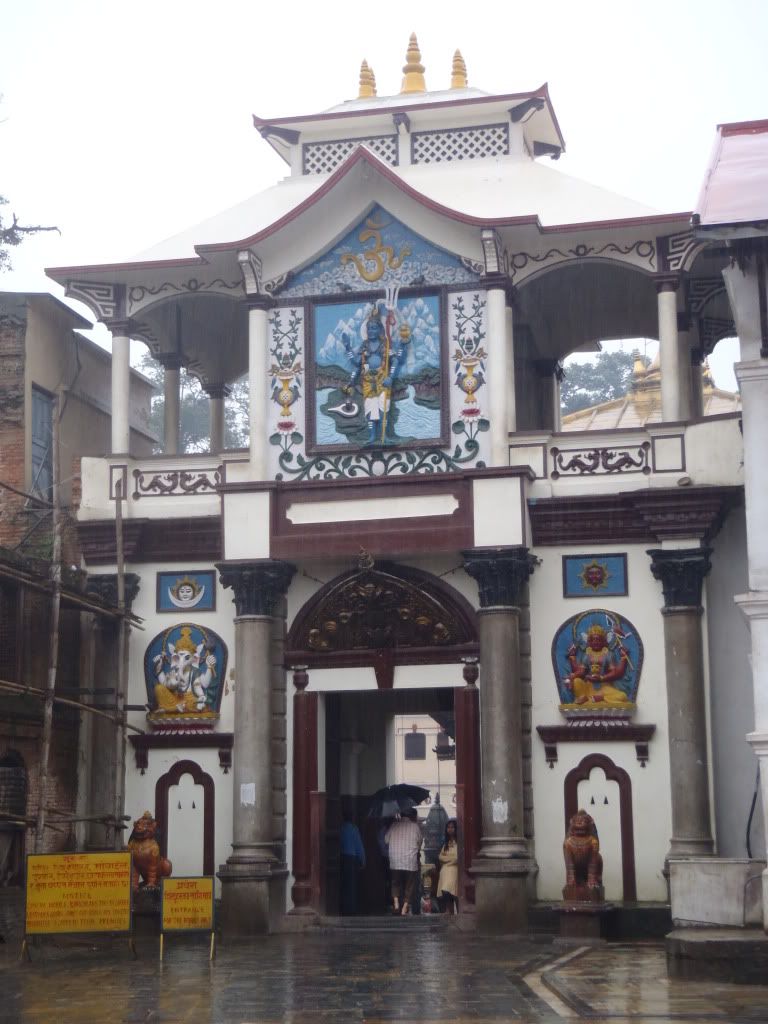
“According to Nepal Mahatmaya and Himvatkhanda, one day Lord Shiva grew tired of his palace atop Mt. Kailash and so went in search of a place where he could escape to. He discovered Kathmandu Valley and, without telling anyone, he ran away from his palace and came to live in the Valley. He gained great fame there as Pashupati, Lord of the Animals, before the other gods discovered his hiding place and came to fetch him. He disguised himself as a majestic deer and would not help the other gods when they asked for his help. When Shiva did not yield to their pleas, they planned to use force. God Vishnu grabbed him by his horns and they shattered into pieces. Vishnu established a temple and used the broken horns to form a linga on the bank of the Bagmati River. As time went by, the temple was buried and forgotten. Then a cow was known to have secretly sprinkled her milk over the mound. Apparently, when the cow herders dug around the spot, they found the lost lingas and again built a temple in reverence.”
After paying a steep entrance fee (it was 750 rupees per person or $10 USD) Henk and I wandered through the open-air temple grounds. There were some shivalingas on the grounds and some lush garden area, but not too much else. We quickly realized that the ‘actual’ temple was for Hindus-only and we wouldn’t be allowed inside. From the outside we could only see the ‘ass’sets of a large brass statue of Shiva’s vehicle Nandi the bull. At first we weren’t sure what we were supposed to be seeing and worried there was something we weren’t ‘getting.’ Turns out we were right! I remembered that there were supposed to be cremation ghats at one of the temples we visited and when I noticed smoke coming from the distance near the Bagmati River I thought the ghats might be there.
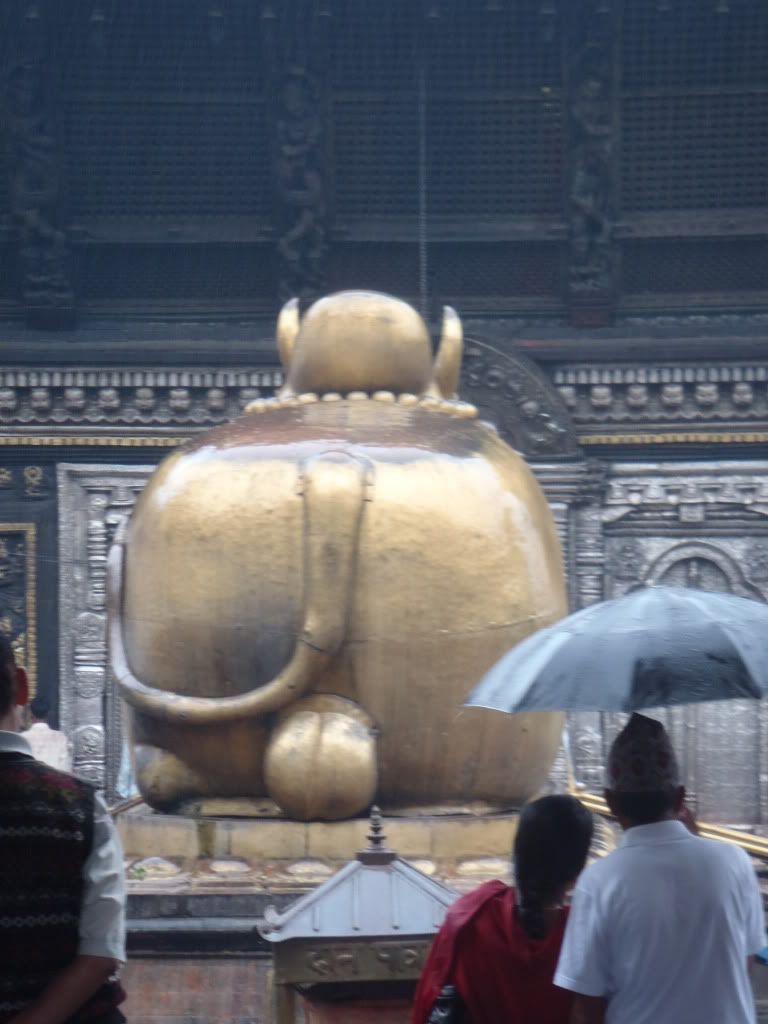

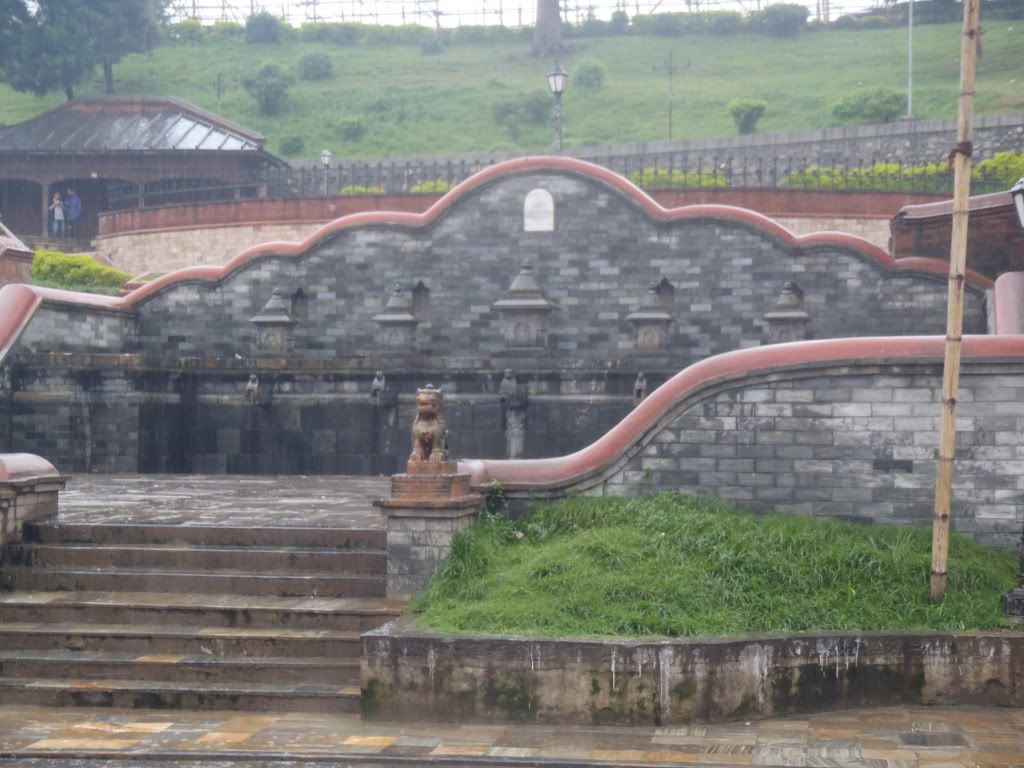
We headed over to the cremation ghats and watched in awe as a young girl, no more than 13 or 14 probably, was hoisted onto a platform by her relatives. An impromptu tour guide came up to us while we were at the ghats and started to lead us around. Knowing he would want a tip at the end, we let him guide us regardless since he actually had some interesting information to tell us. This guide also assured us (multiple times) that it was OK to take photos of the bodies. We didn’t have our camera out at first and thought it would be considered quite disrespectful to take any pictures of people’s dead relatives… but the guide explained to us that it was perfectly fine to take pictures because Hindus consider death and dying to be natural parts of the life cycle; just another example of impermanence, rather than something to hold onto and mourn over. We still weren’t sure if it would be alright, but no one seemed to mind when we did pull out the camera, so we went with it.
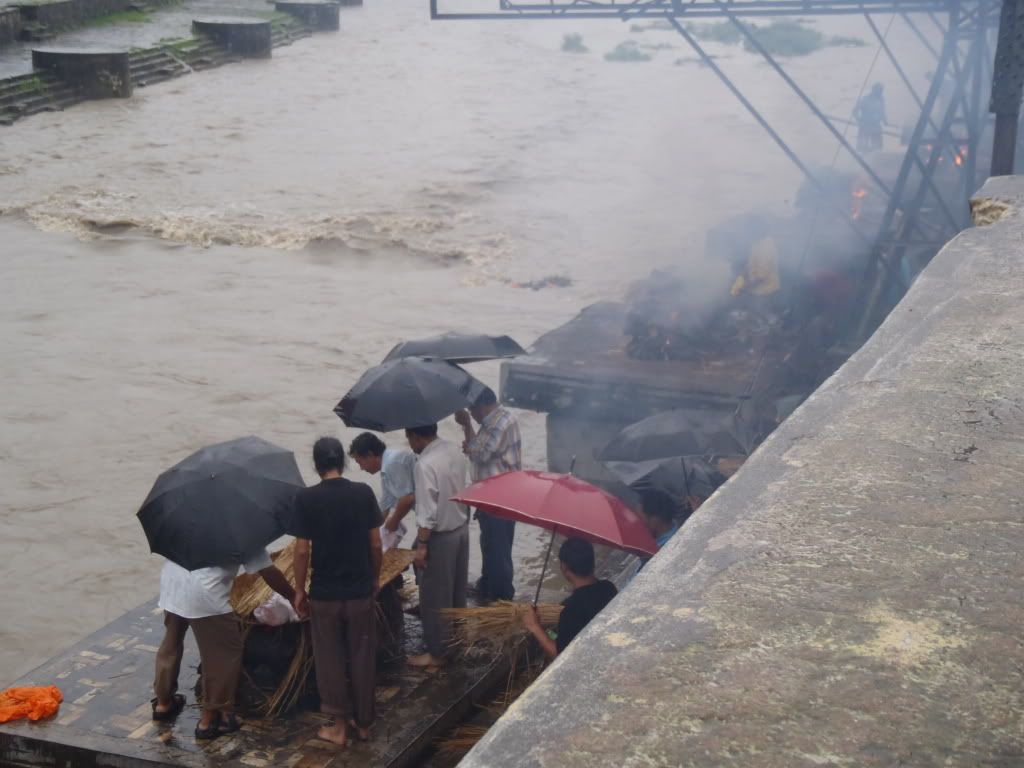
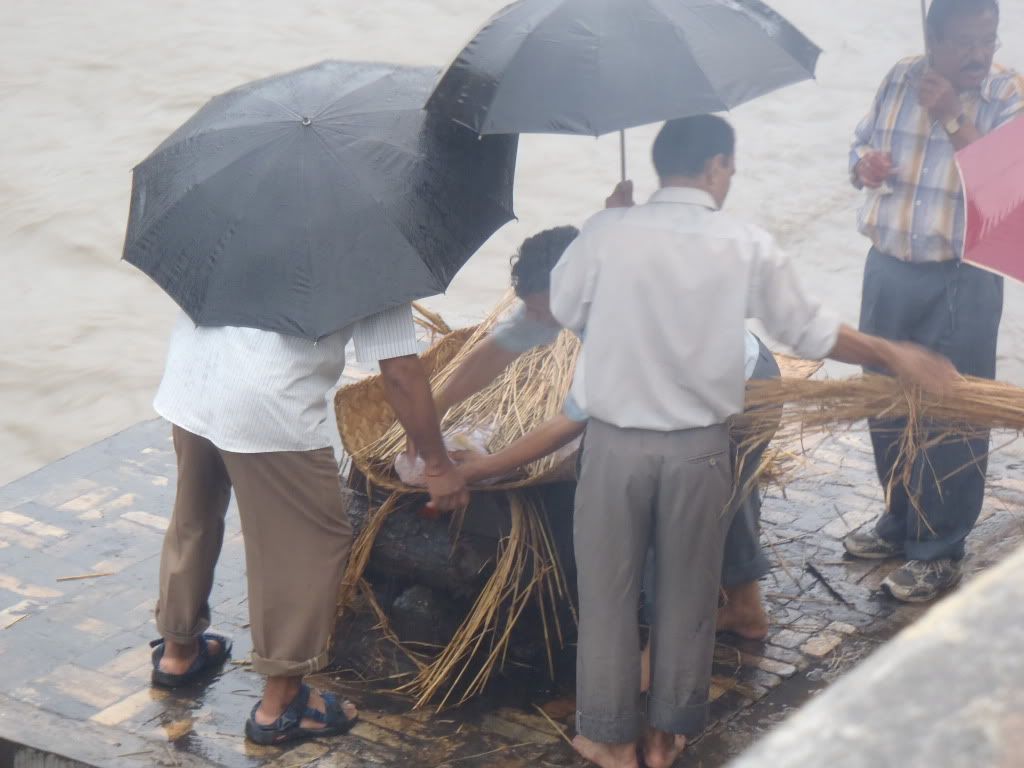
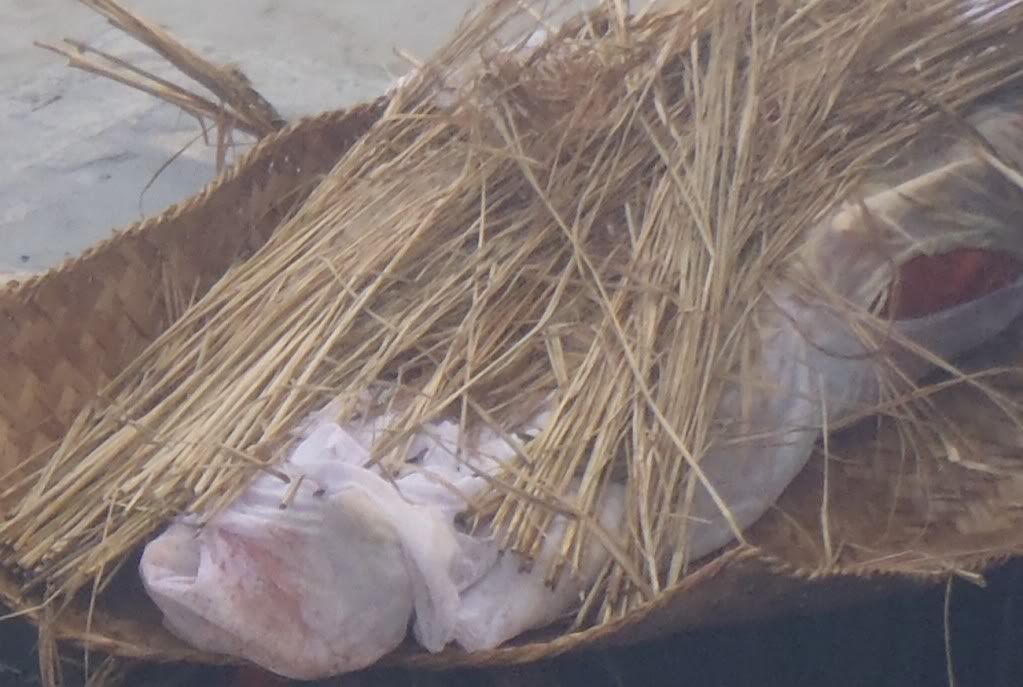
The guide explained to us that the girl we were watching had died in the hospital only 3 hours before we arrived at the ghats. Her relatives brought her directly from the hospital to the funeral ghats since Hindus do not desire any ‘waiting time’ between the death and disposal of the body. This is because the longer a person’s body remains in its decomposing state; the more time there is for the person to turn into a ghost or spirit, set to wander the earth. Henk and I watched as the girl’s body was laid with her head north and her feet south, since south is believed as the ‘direction of the dead’ this action makes it easier for the dead person to follow the dead. She was then unwrapped and then rewrapped by her relatives, and both wood and dried-out straw were used to act as kindling for her body. When lighting the body on fire ghee (fat/butter) is used as the agent. First a flame is placed in the girl’s mouth, and then the rest of the body can be set alight.
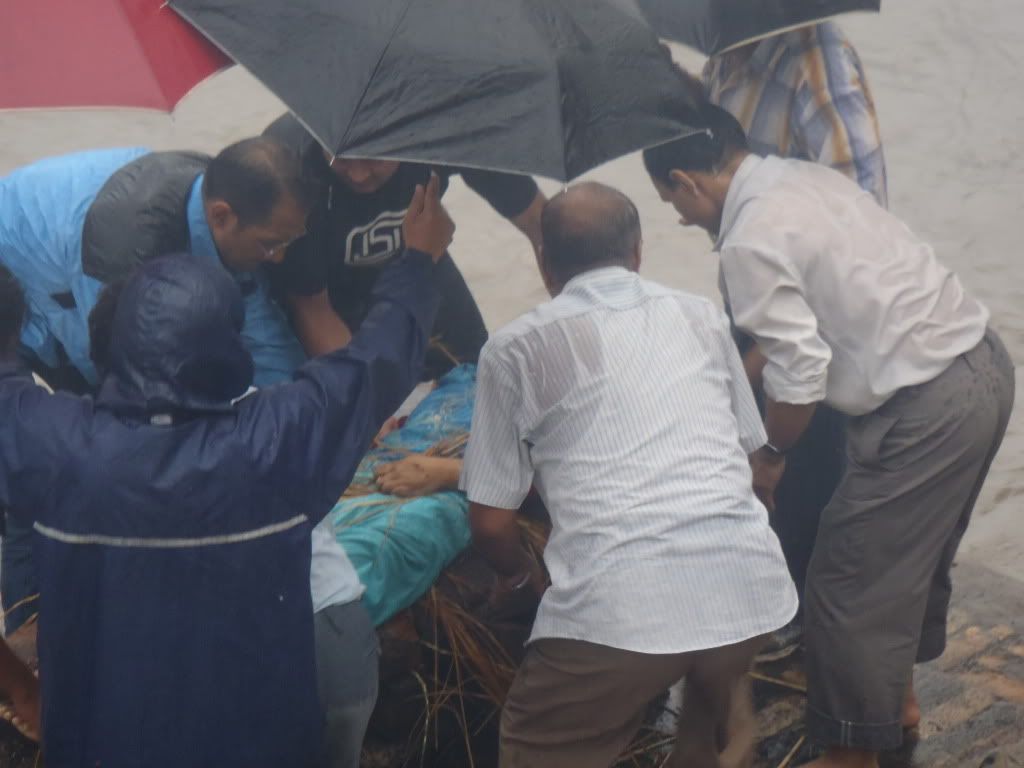
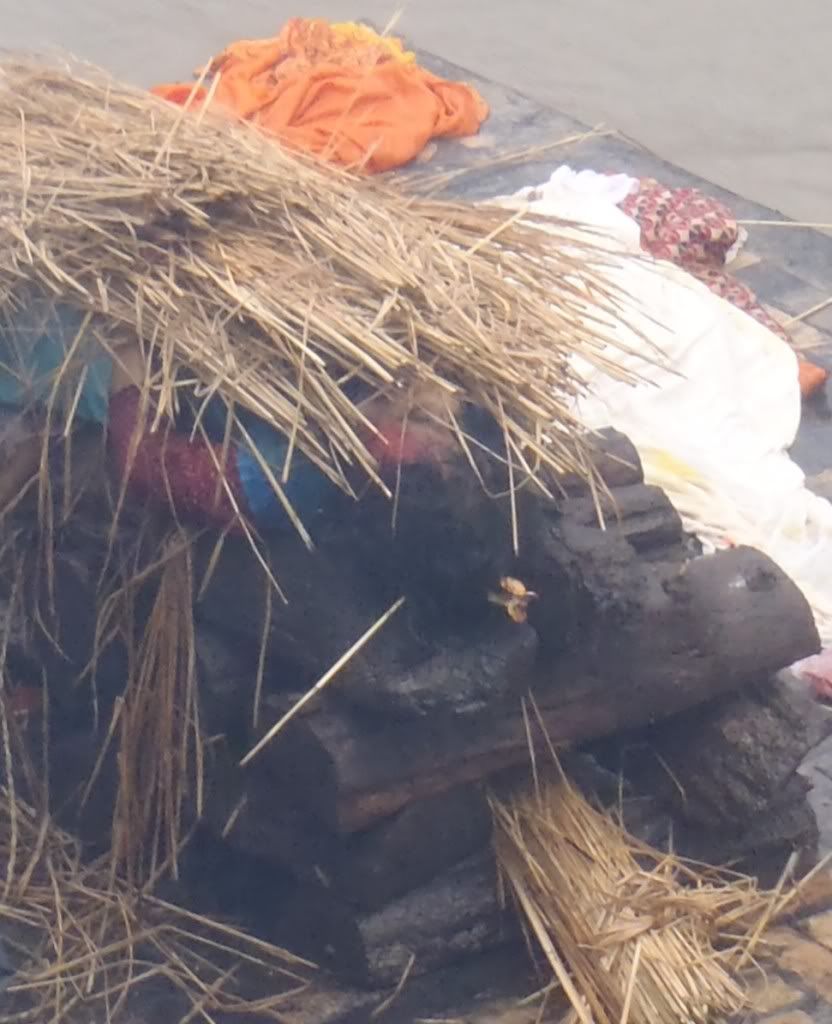

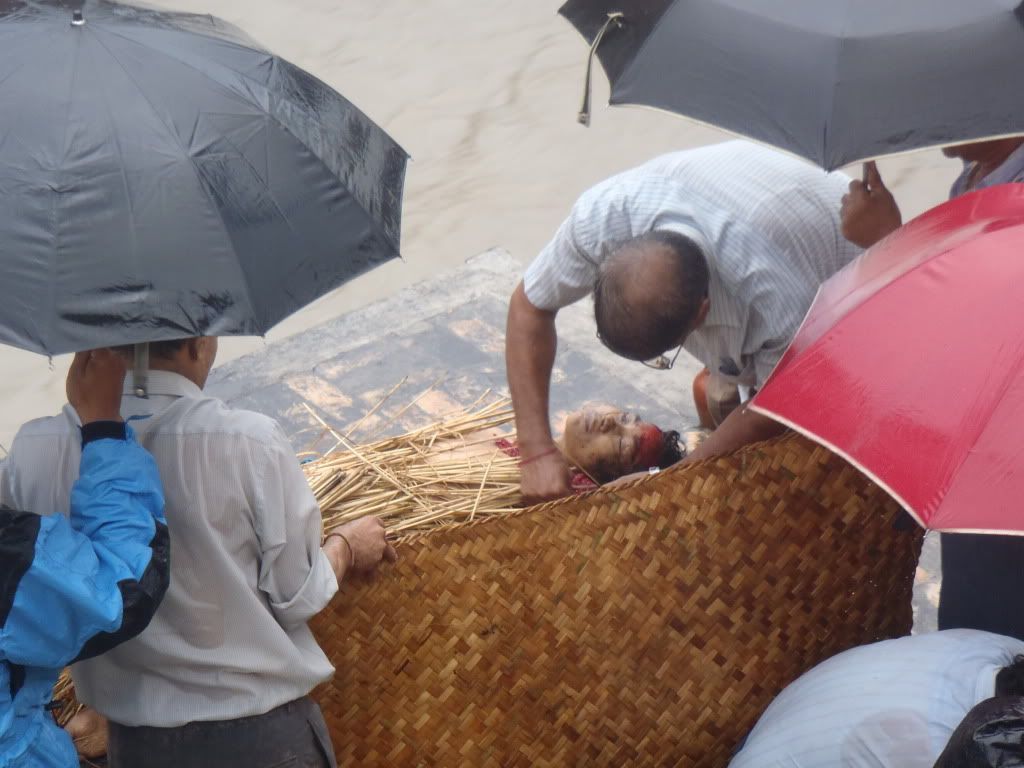
The girl’s personal clothing/objects are tossed into the waves of the Bagmati River (which was actually flowing quite rapidly) to float off to meet the holy Ganges River. After the girl’s body becomes pile of ashes, those ashes are swept into the Bagmati River to also flow to the holy Ganges. Depending on who has died in a family, the eldest brother (if the father or sometimes mother has died) or the wife (if the husband has died) will sometimes go into a period of morning, staying in seclusion for days on end and following strict rules regarding purity with what they can eat, drink, and wear. We continued to watch the funeral procedures until the pyre was lit. Once the girl’s body was on fire (and then covered with a woven mat) there was instant smoke everywhere. It became way too much to try and breathe through the smoke so we moved off to watch from the other side of the river.
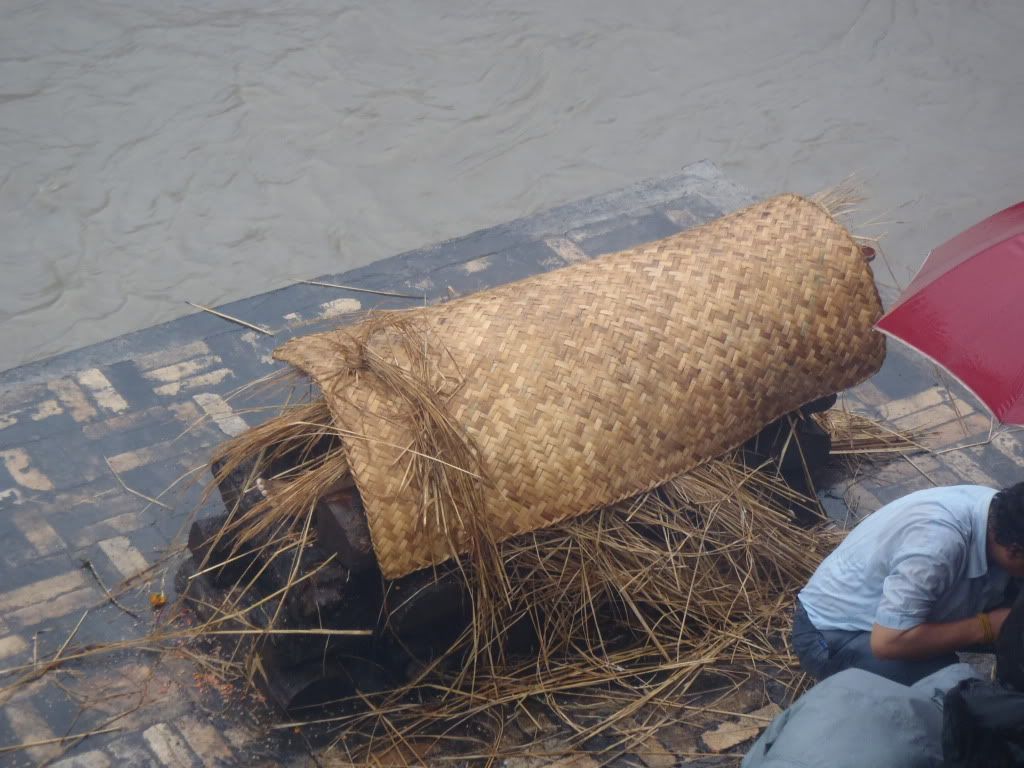
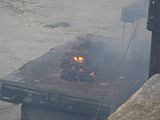
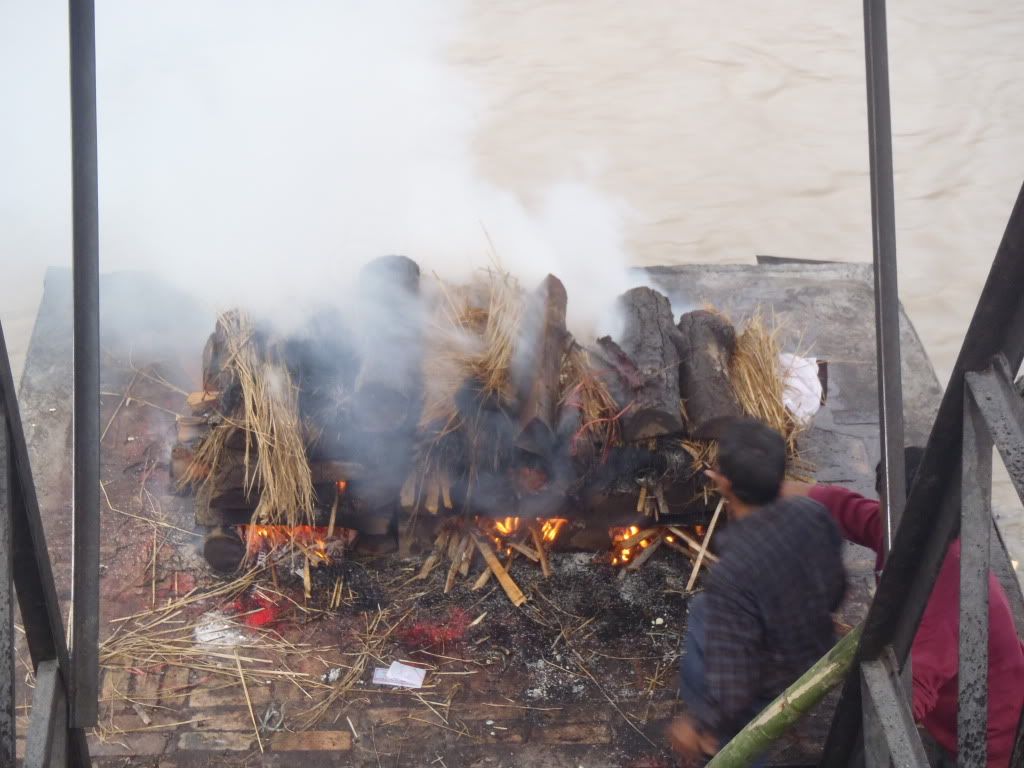
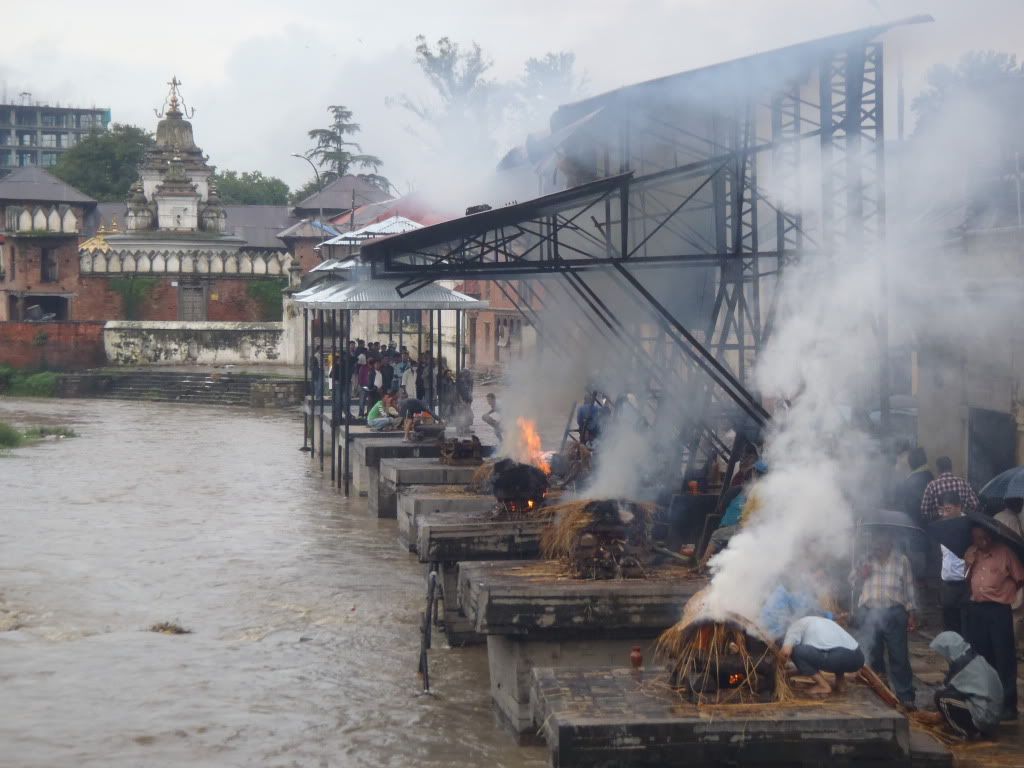
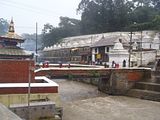
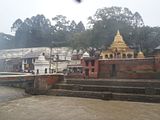
Once we were on the other side we could clearly see that there was not just one platform for cremation, but there were separate platforms for each Hindu caste. On the far left of the ghats on the other side of the bridge, was the special Arya Ghat cremation grounds used only for the royal Hindus. While the platforms at the Ram Ghat cremation grounds (for ‘normal’ people) were more-or-less bare, there were special holders in this platform where decoration and honorary gifts could be hung from/displayed. When the 2001 massacre of the Nepalese King and his family (murder-suicide) occurred, the 10 bodies of the royal family members were brought here and burned on this special ghat. While we were at the ghats, there was actually a high official being burned… I wonder who died that day.
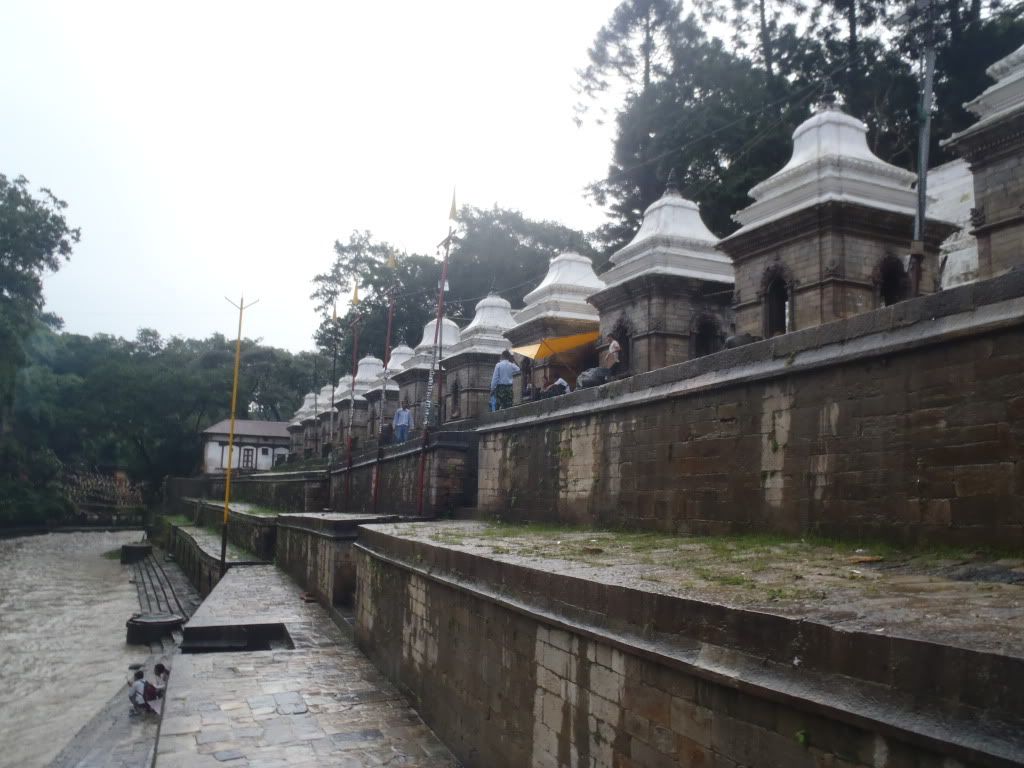
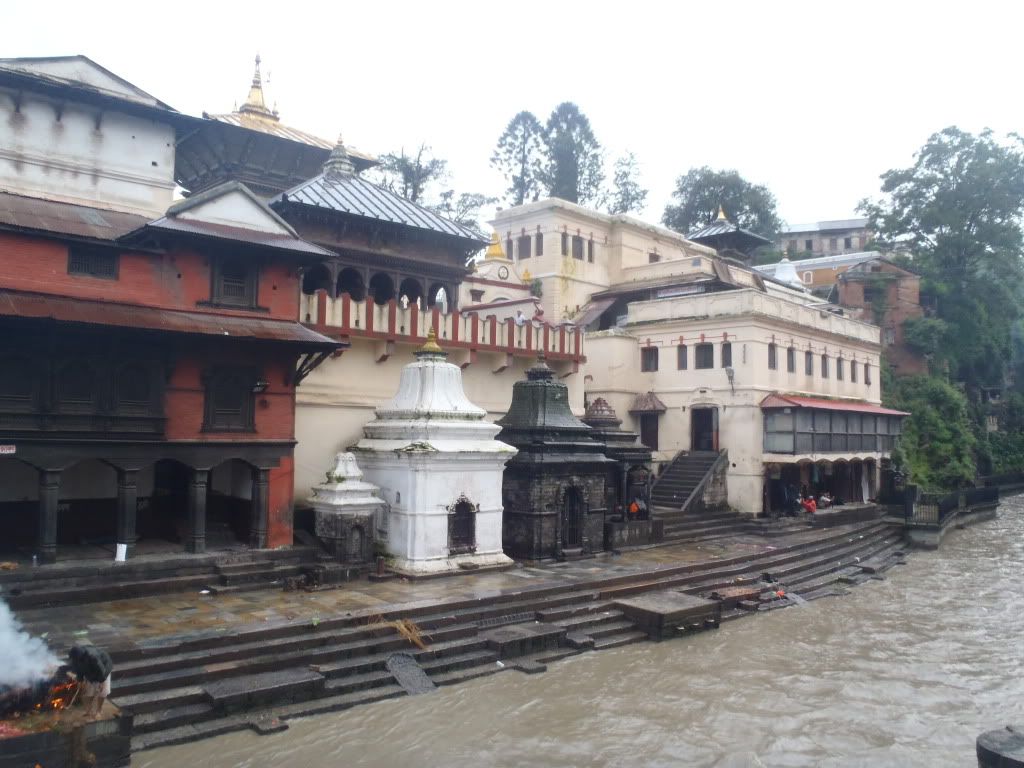
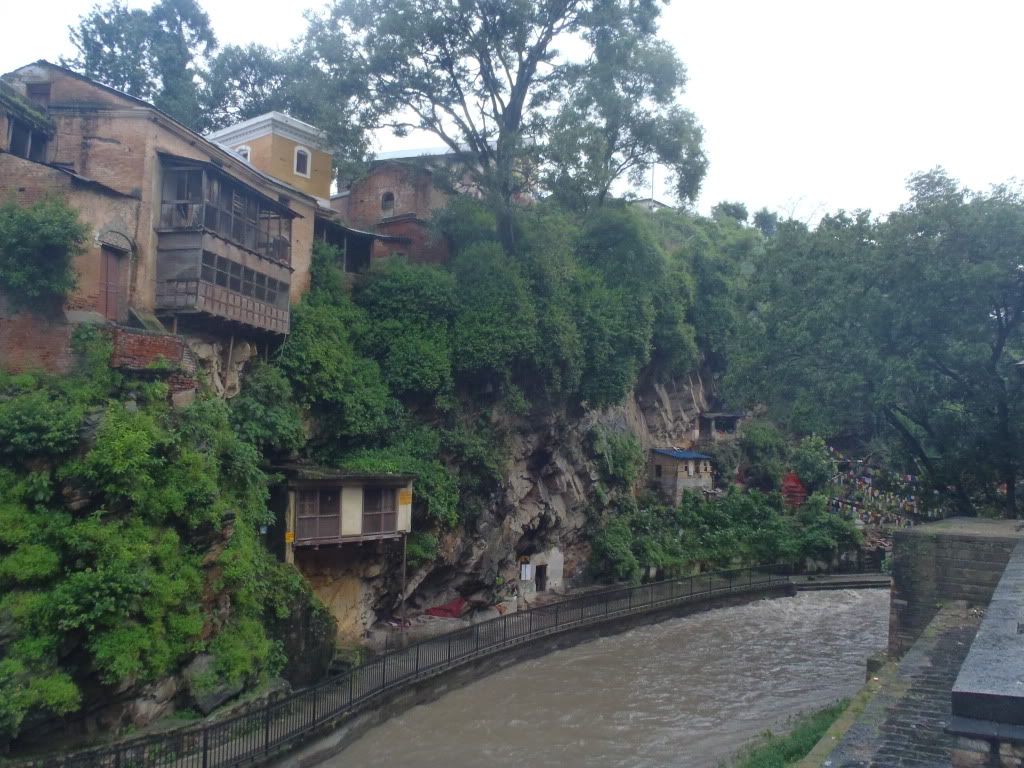
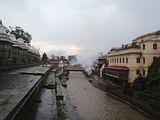
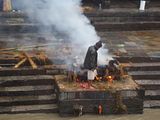
On the east bank of the Bagmati River our guide led us up some stairs and past a few (actually more than 50+) interesting Shiva temples with shivalingas inside before we reached a staggering view of the Bagmati below us. The guide pointed out the cave of a hermit (yogi) in the distance and the Bachhareshwari Temple, a 6th century Tantric temple where it is rumored human sacrifices used to be performed during festivals. He even showed us a room where the sick are brought to die near the Bagmati, if their death in 24 hours is eminent.
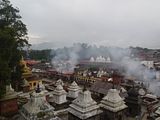
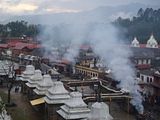
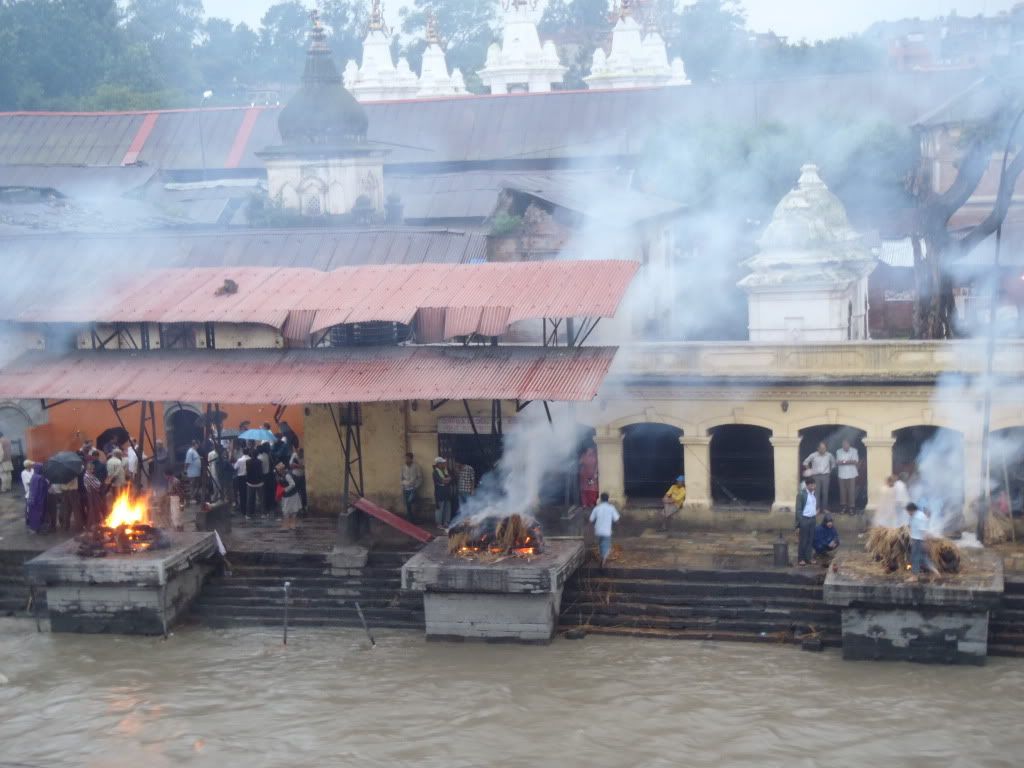
As we walked down we caught a glimpse of another temple non-Hindus aren’t allowed in: the Guhyeshwari Temple, honoring Parvati/Kali’s vagina. Literally! Our guide explained that Parvati’s father insulted Shiva and Parvati exploded into flames, she was so angry. A distraught Shiva carried around his consort’s body and her yoni (vagina) fell in the spot the temple is now standing. Back towards the ghats we made a quick stop (and donation) at the Social Welfare Center and old people’s home run by Mother Teresa’s charity. We took a quick walk around the home before tipping our guide and heading back to our taxi.
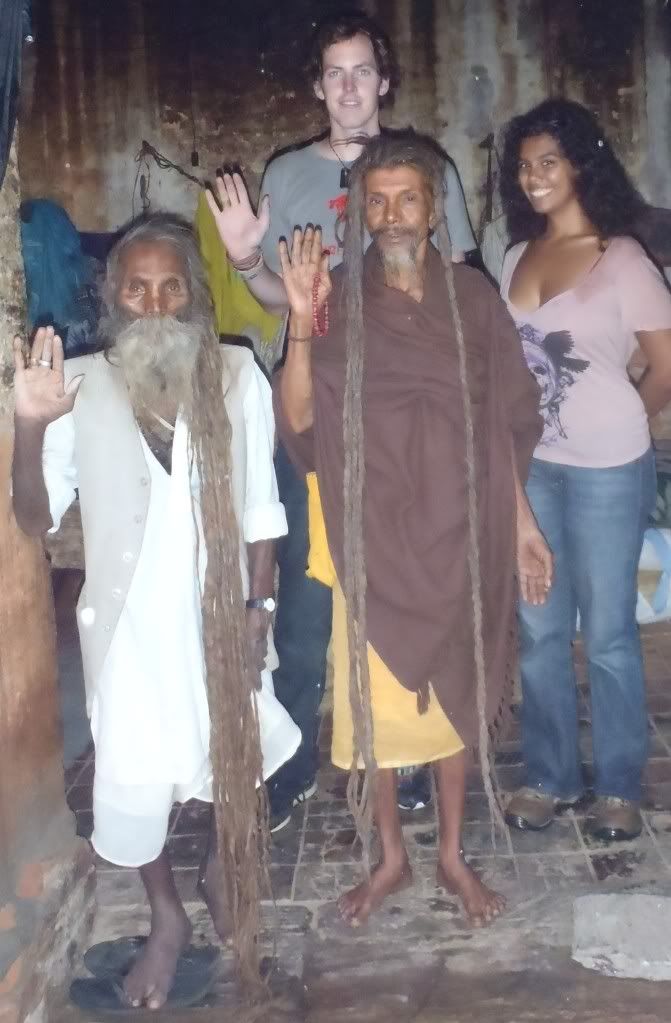
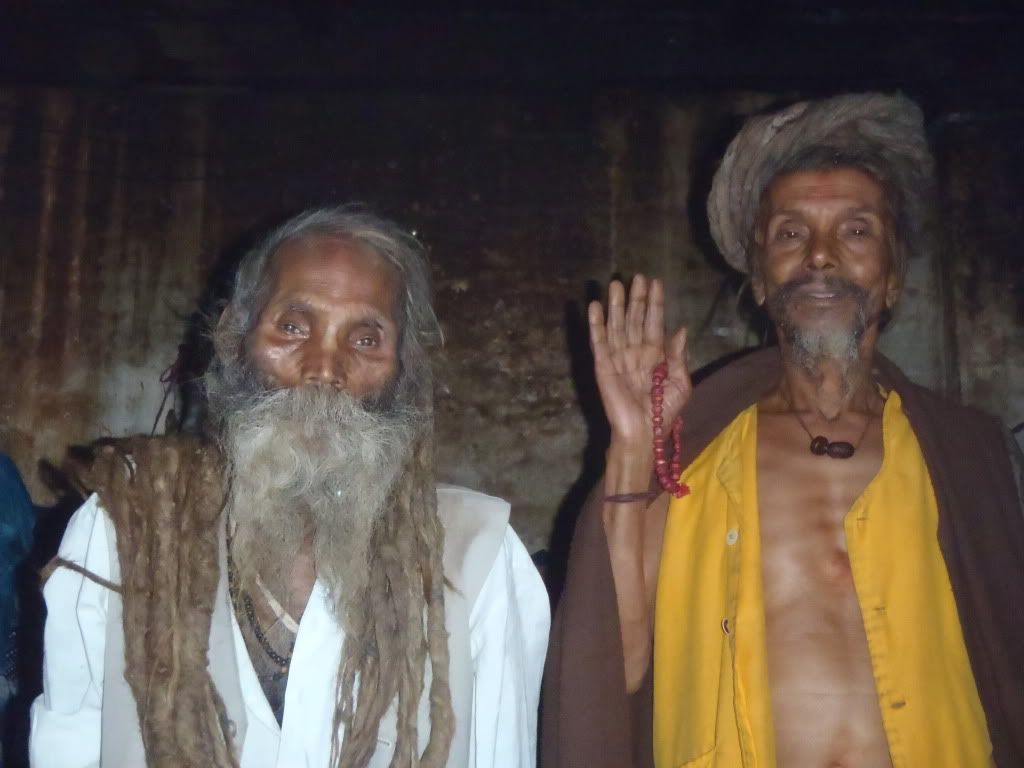
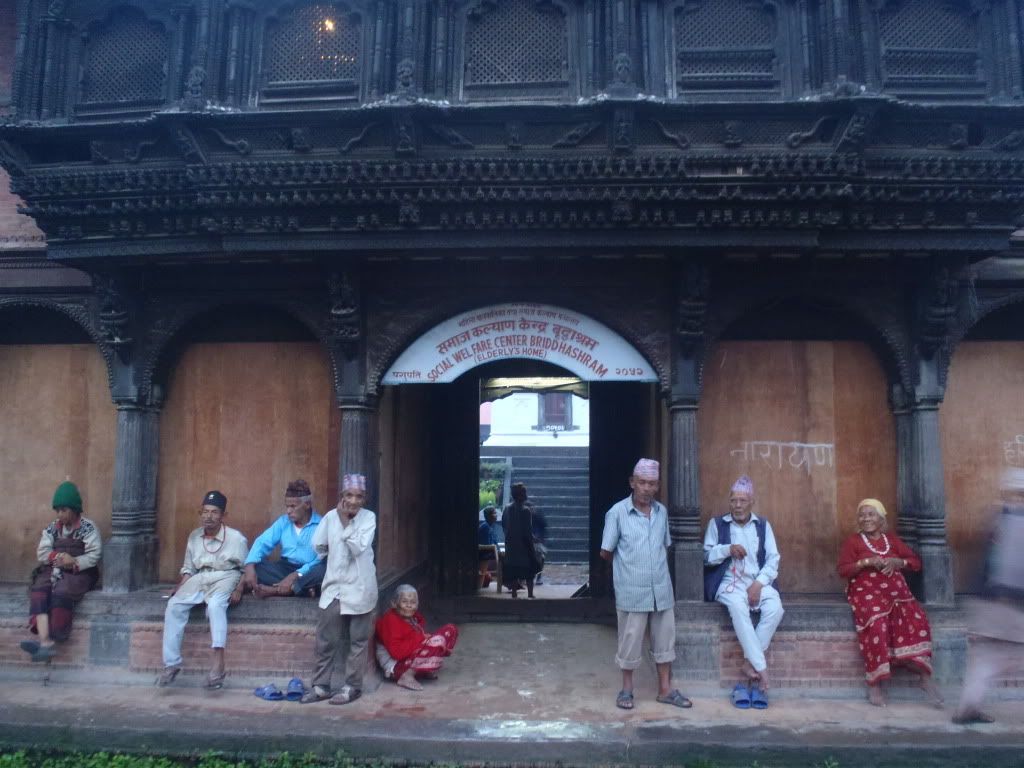
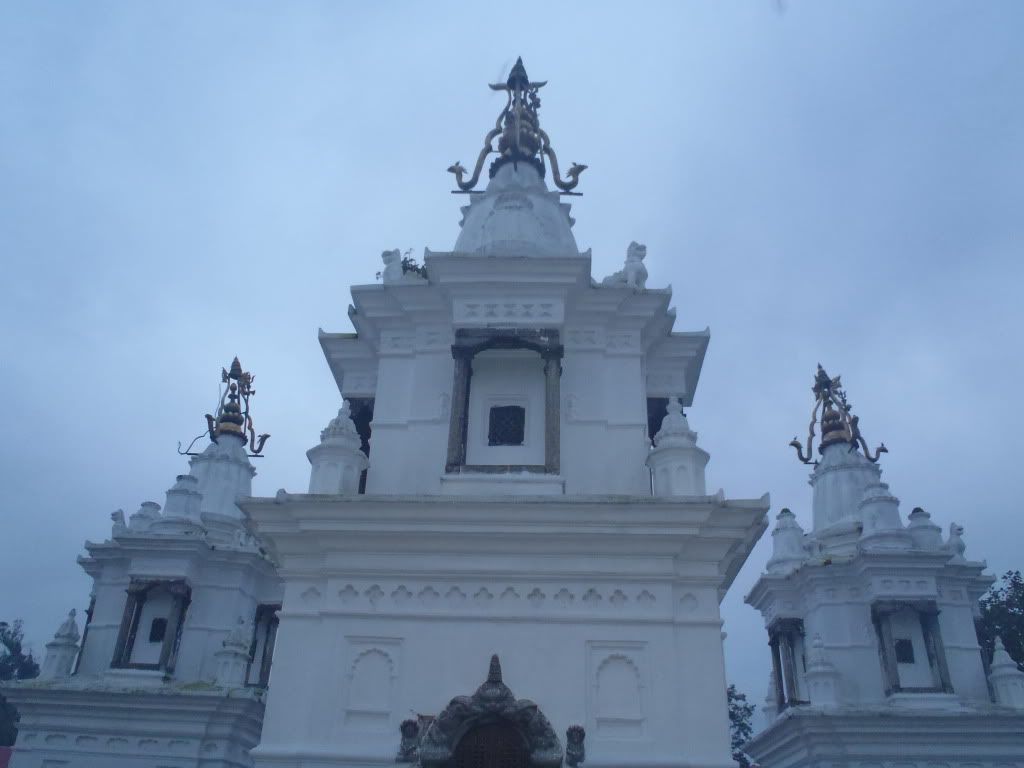
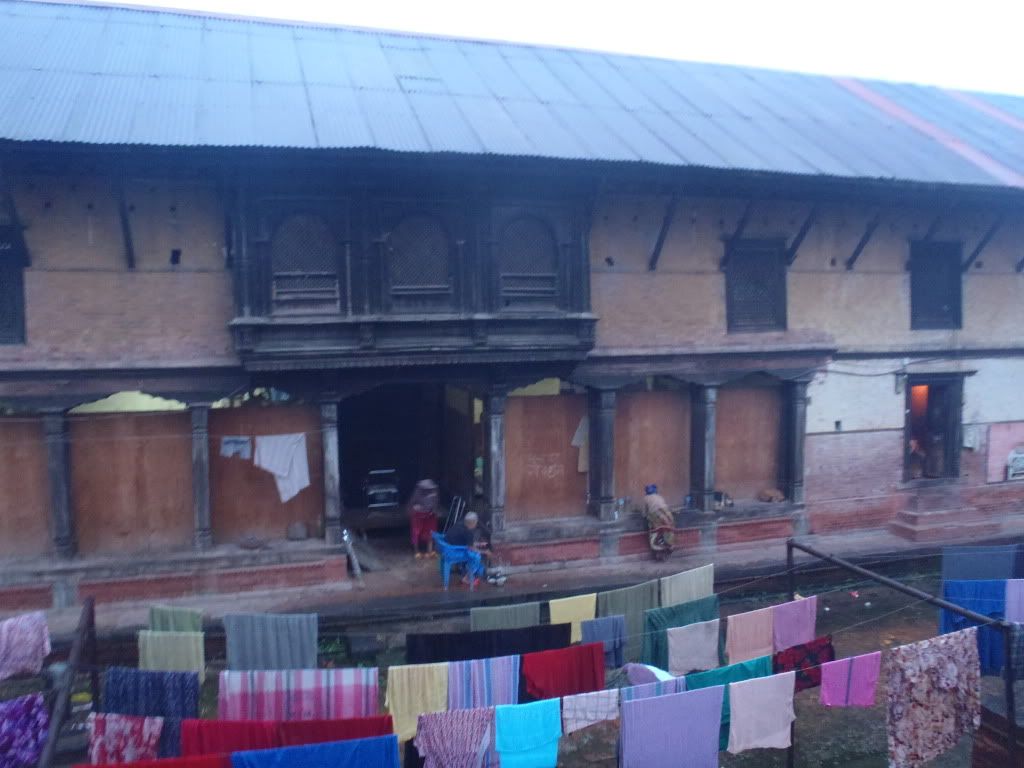
Another long and hectic day, it was well worth it!
Francesca
